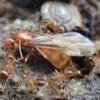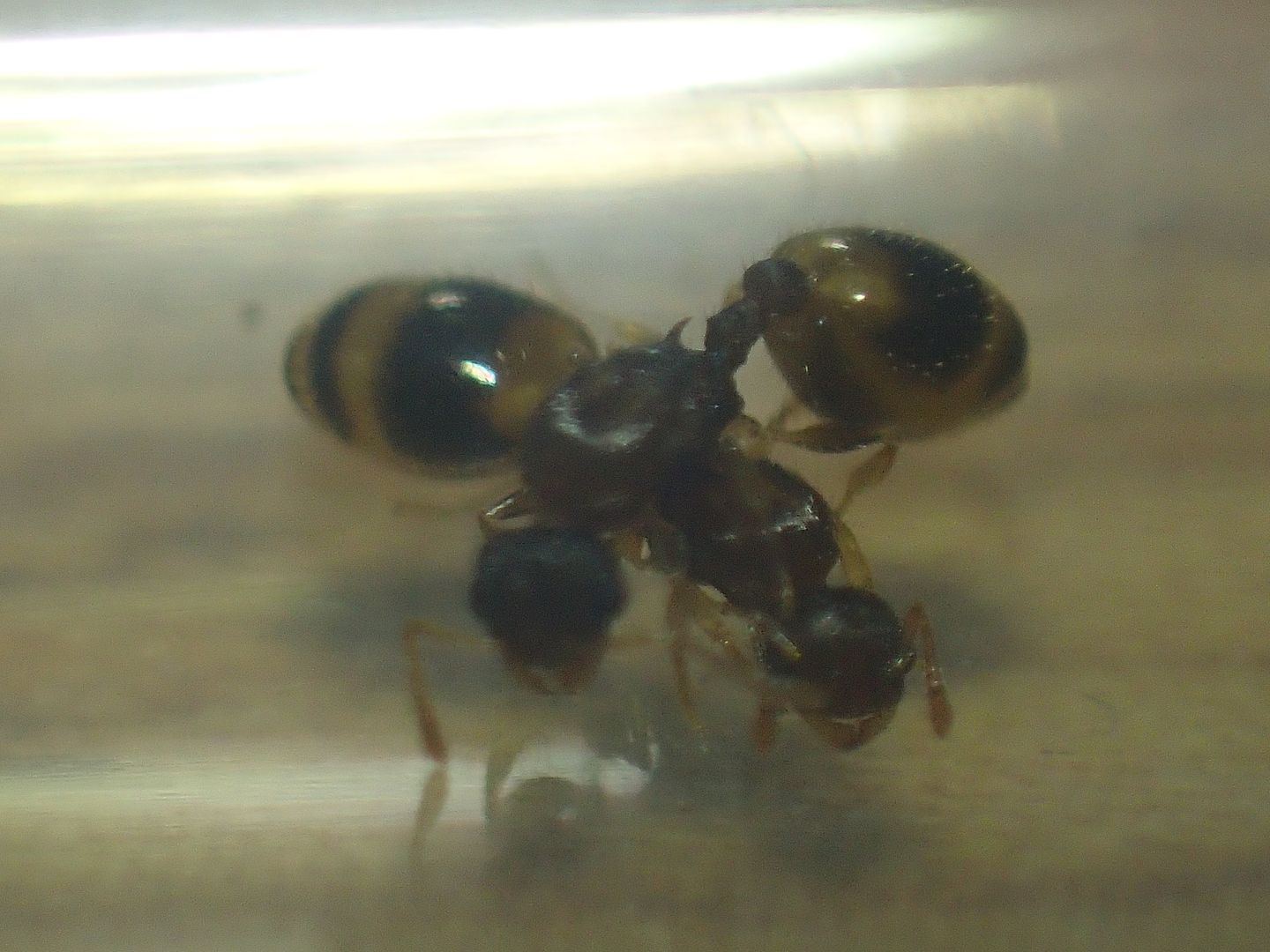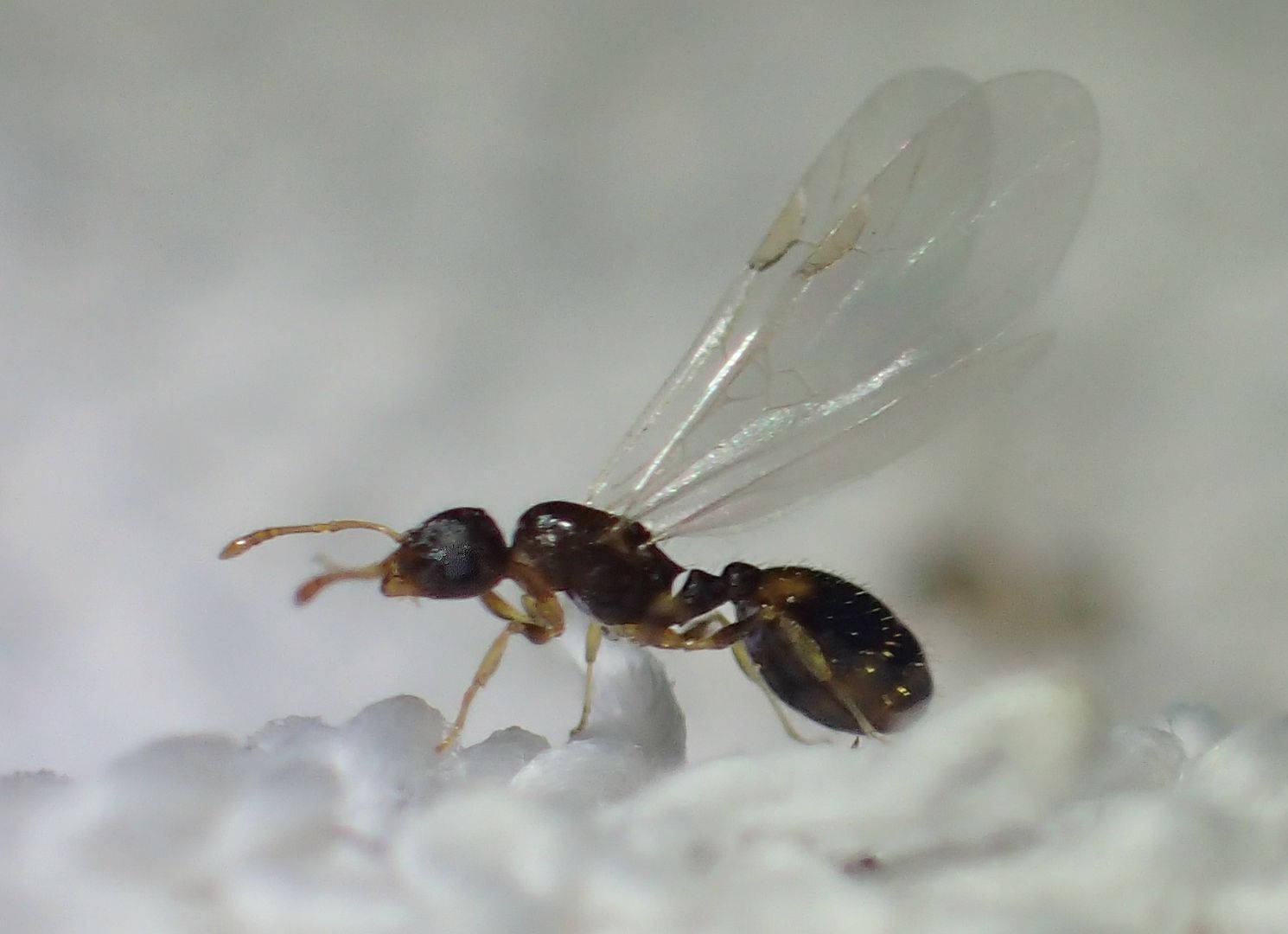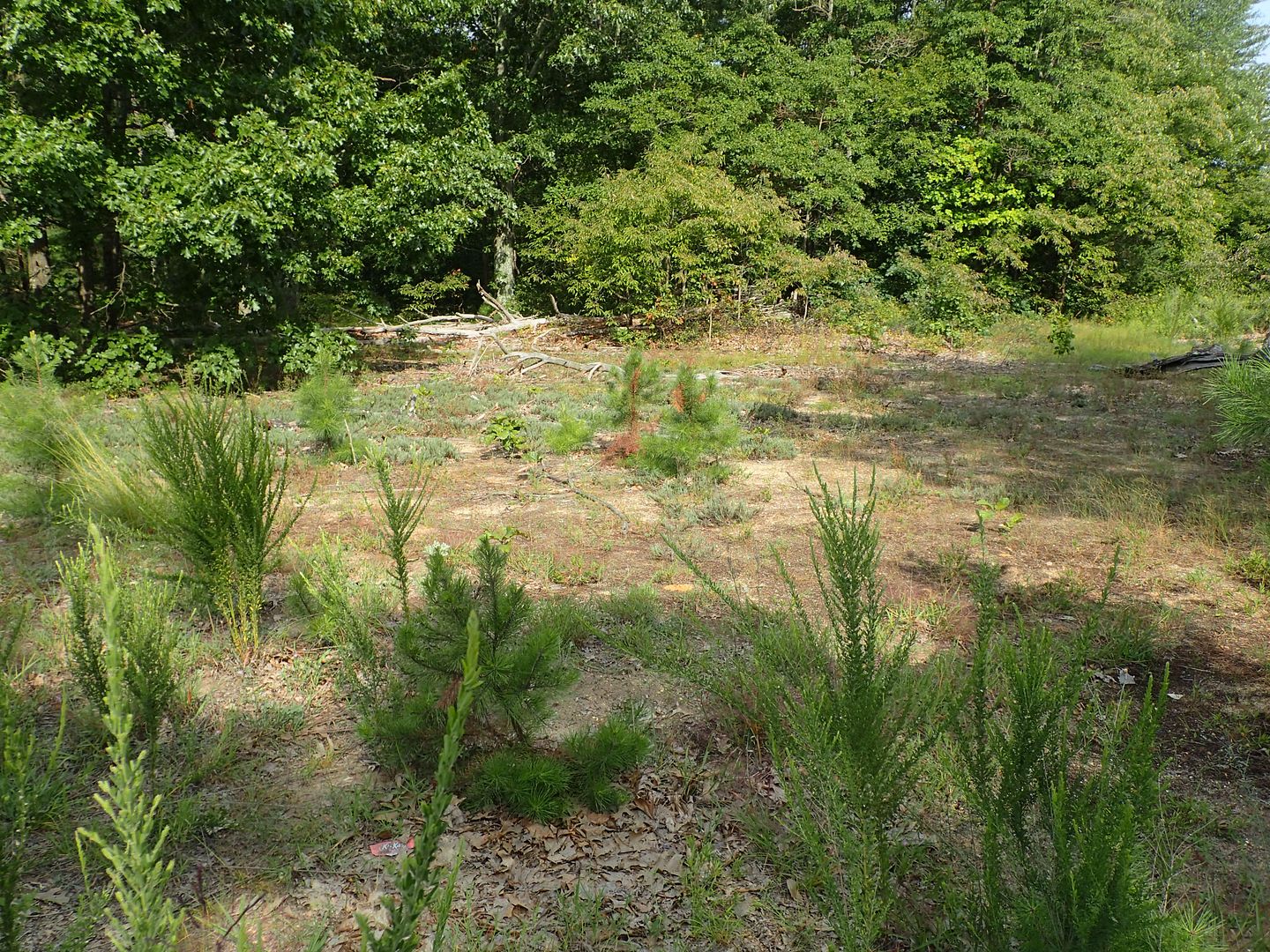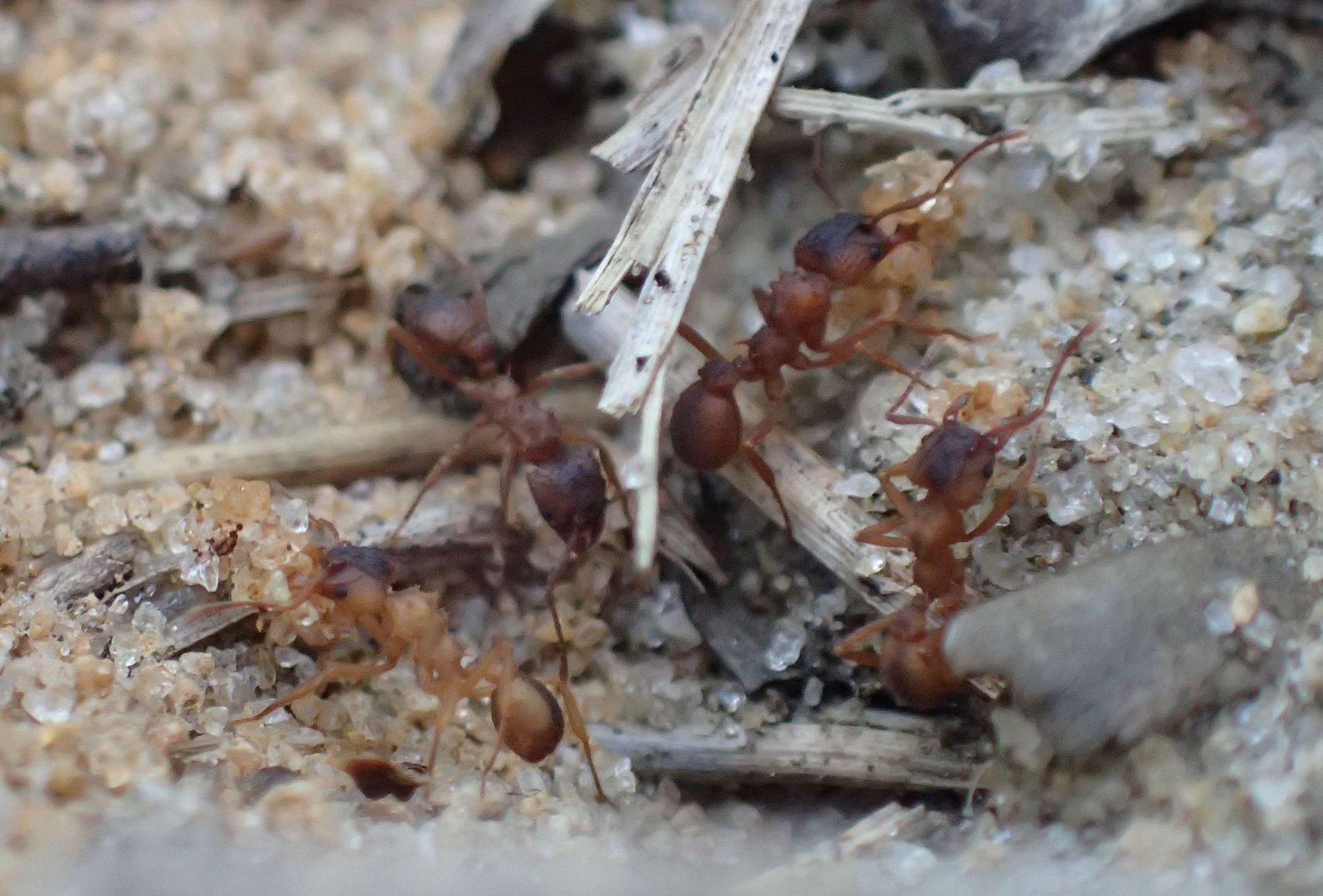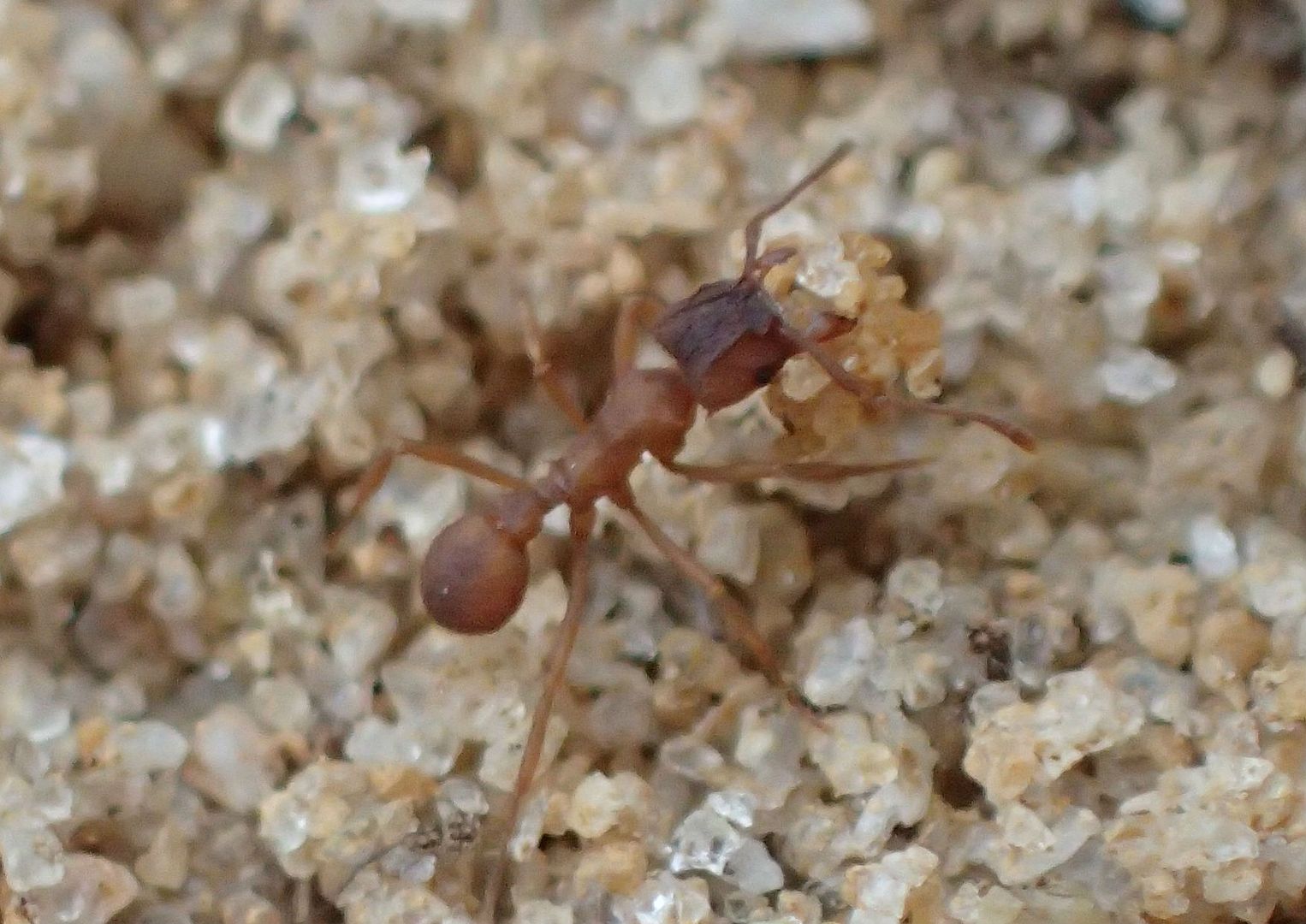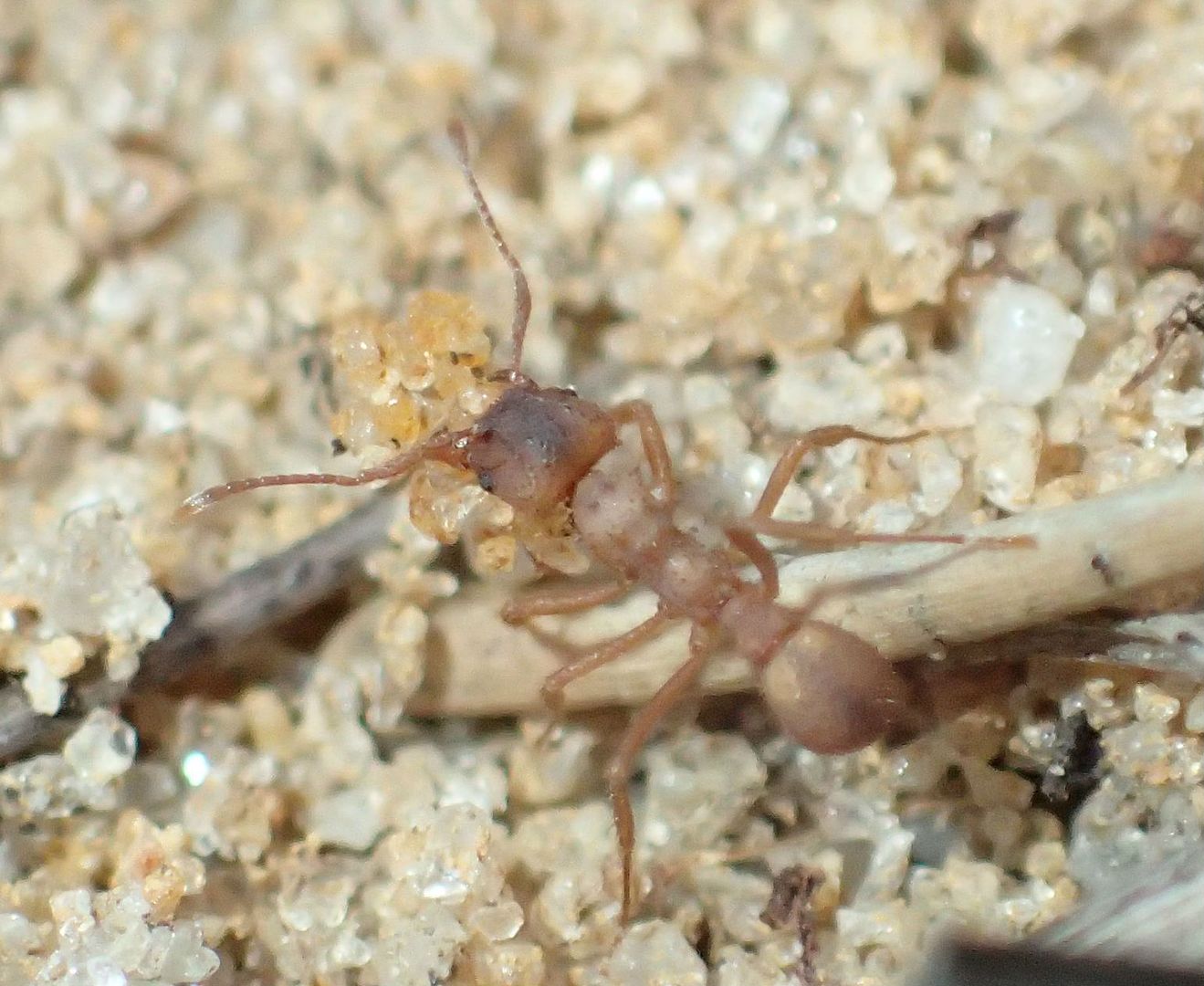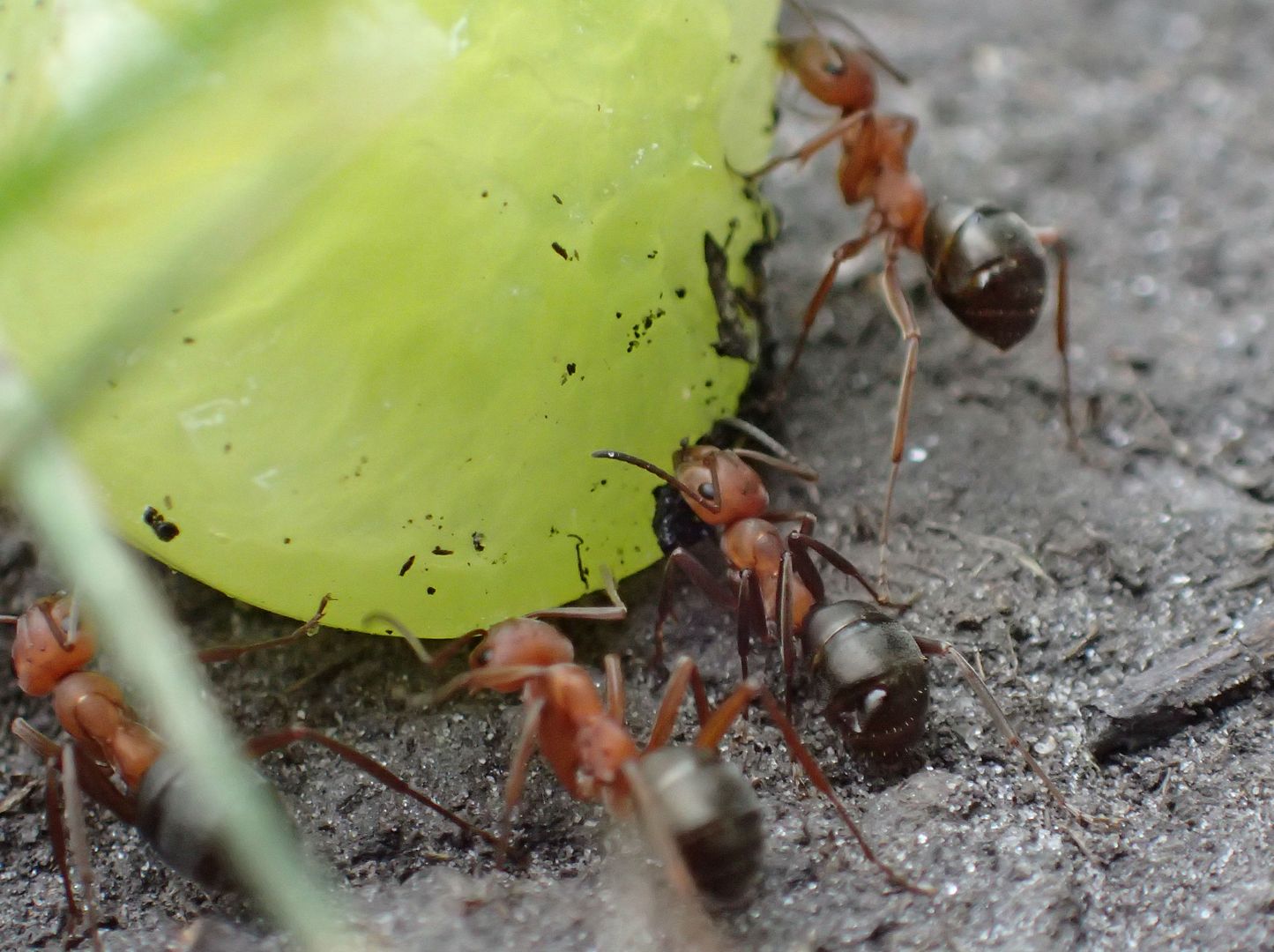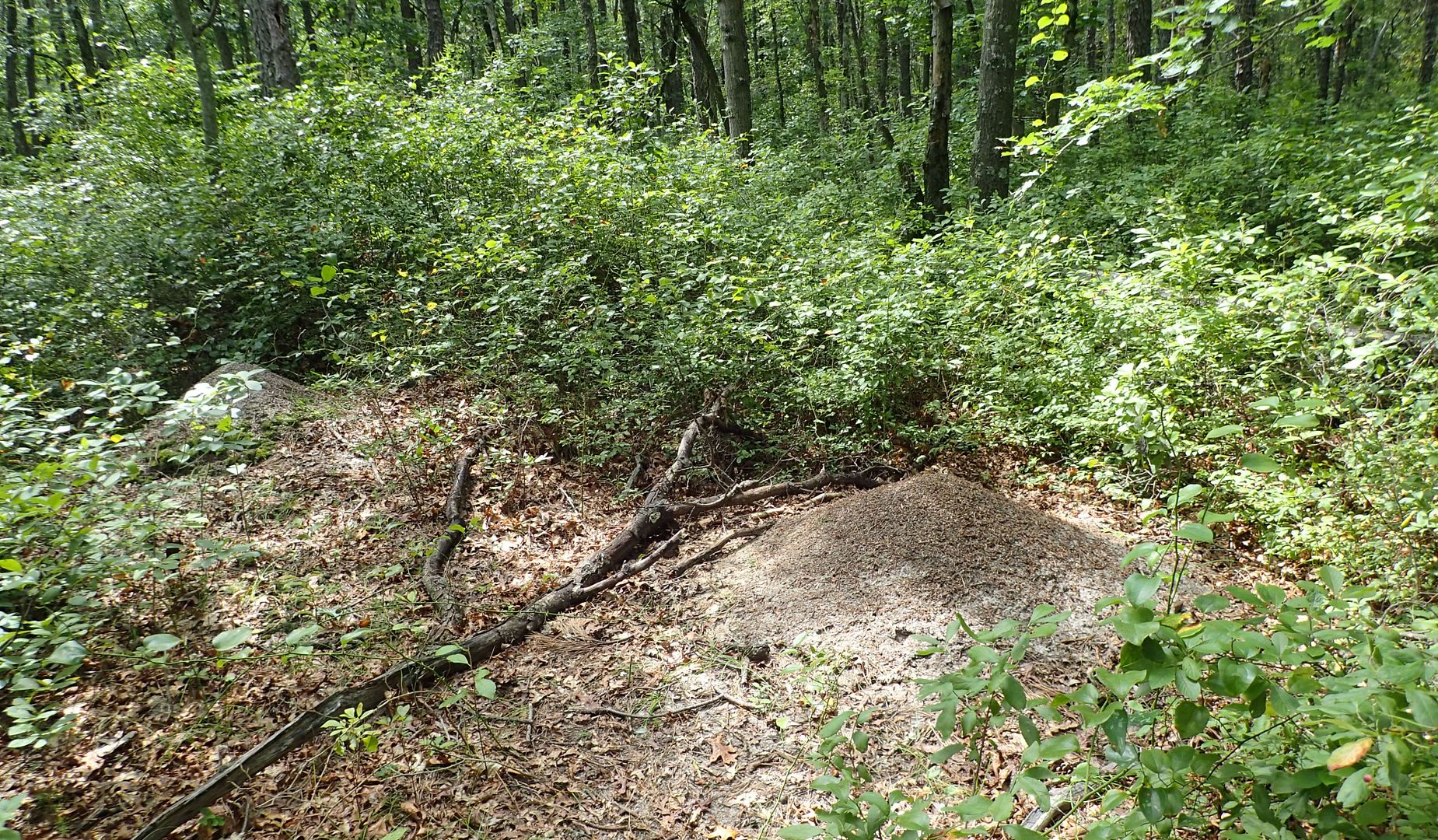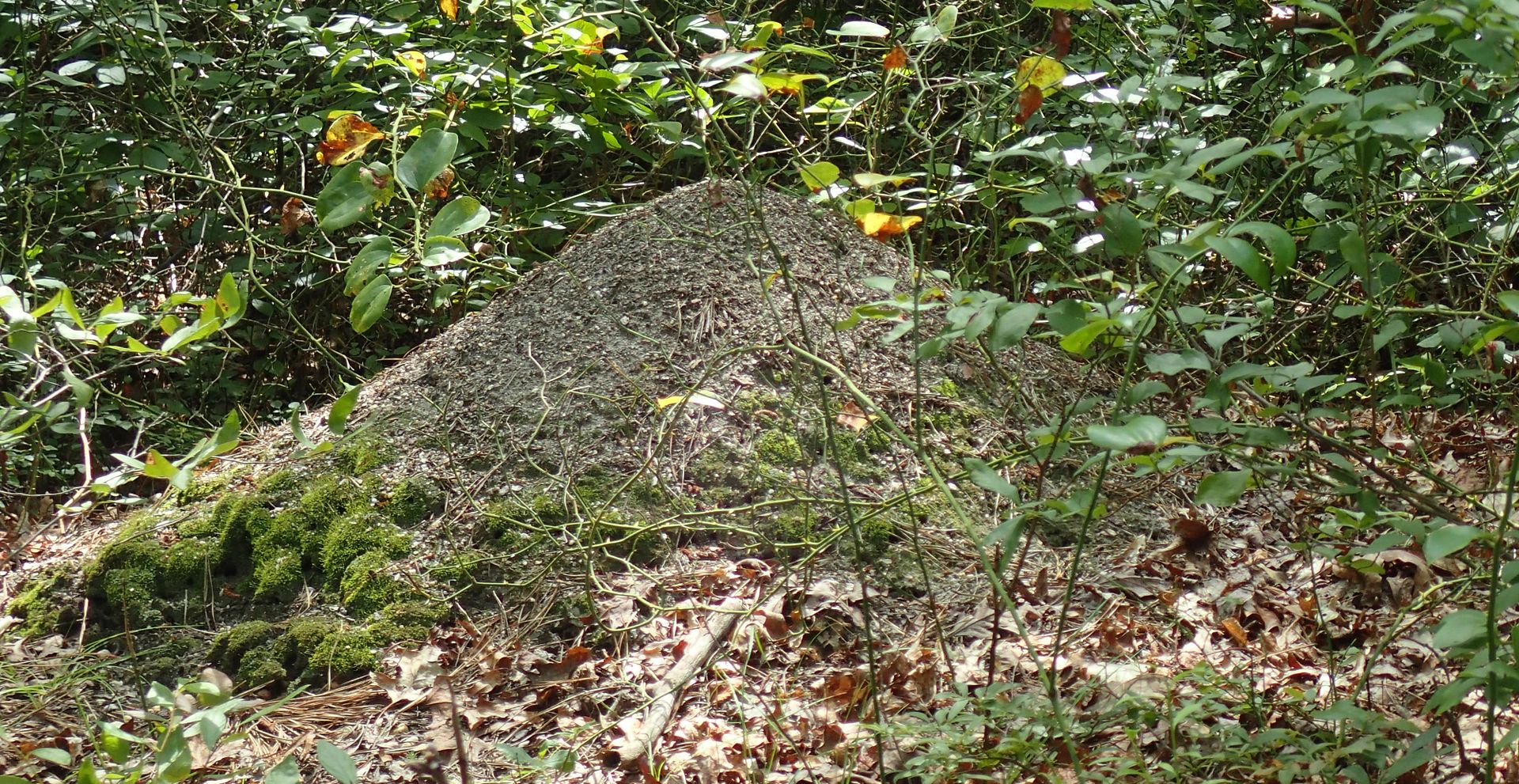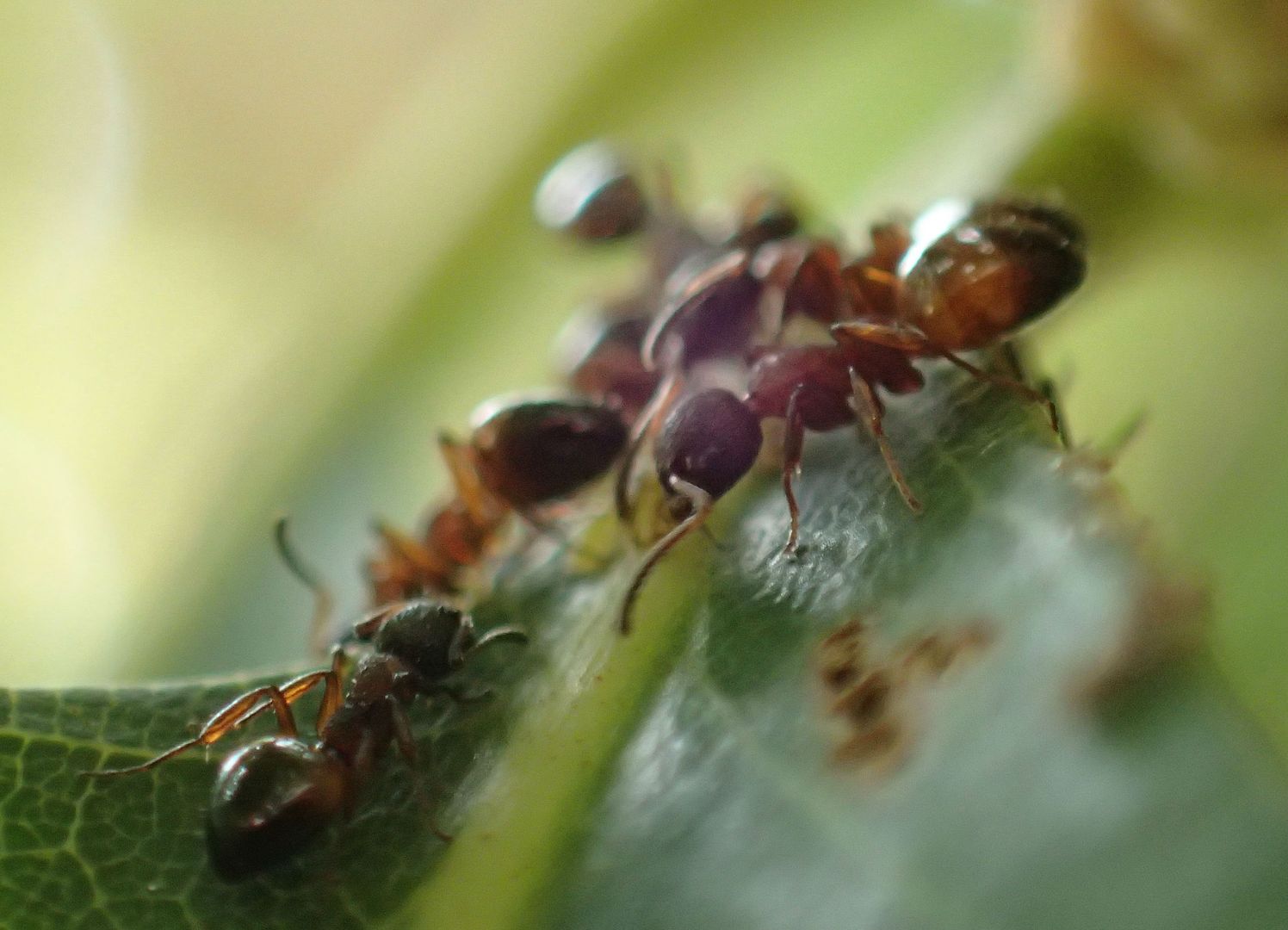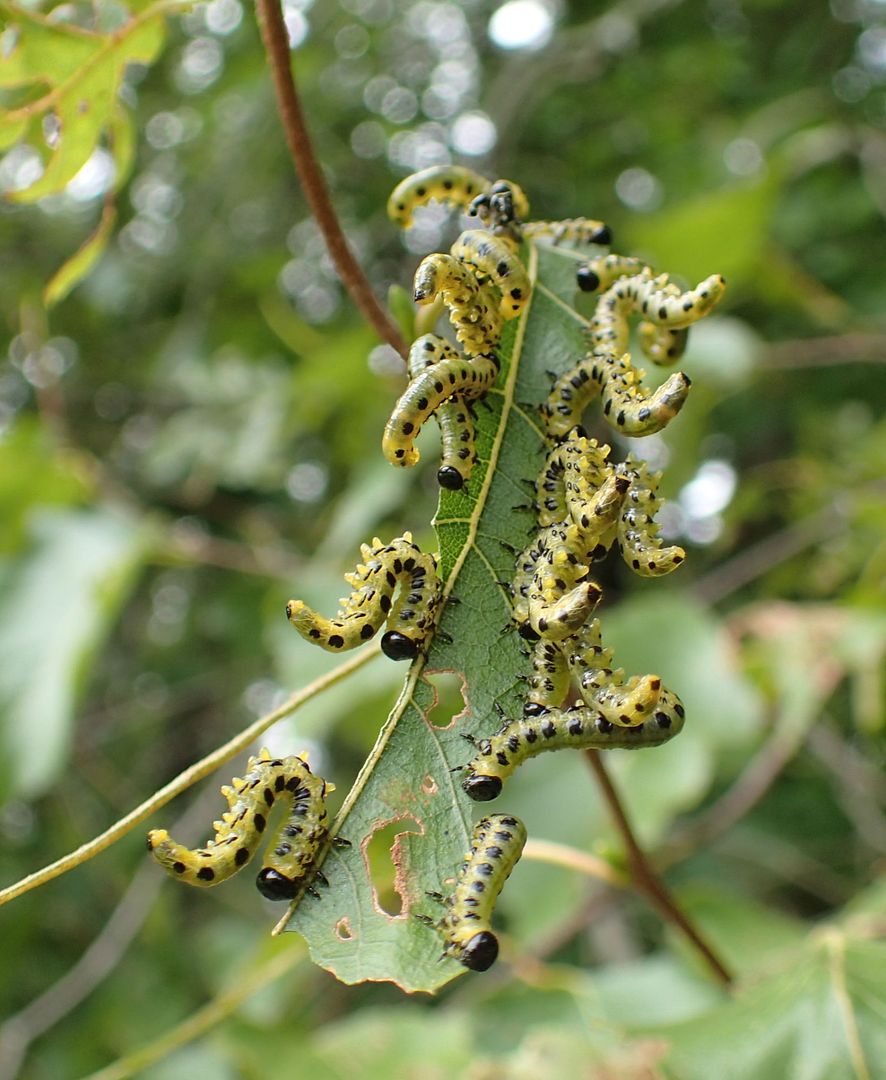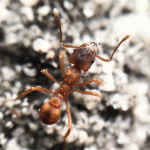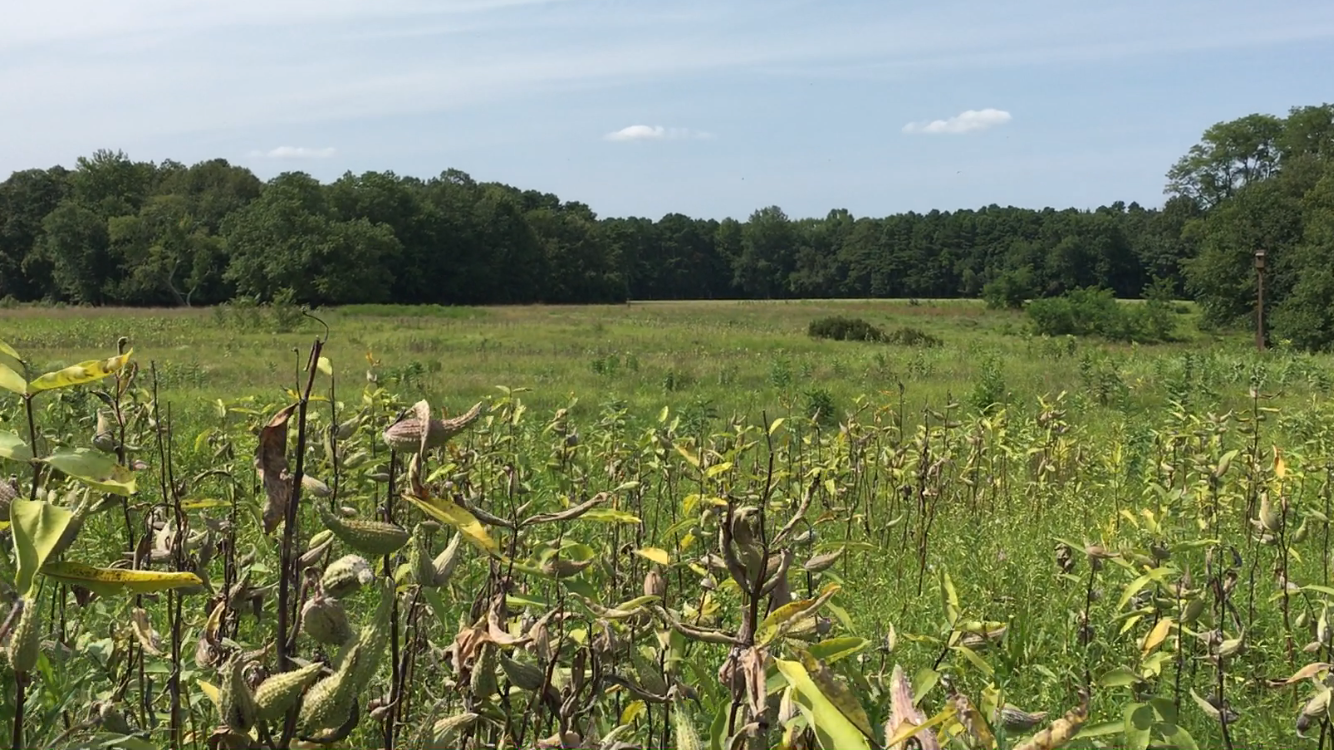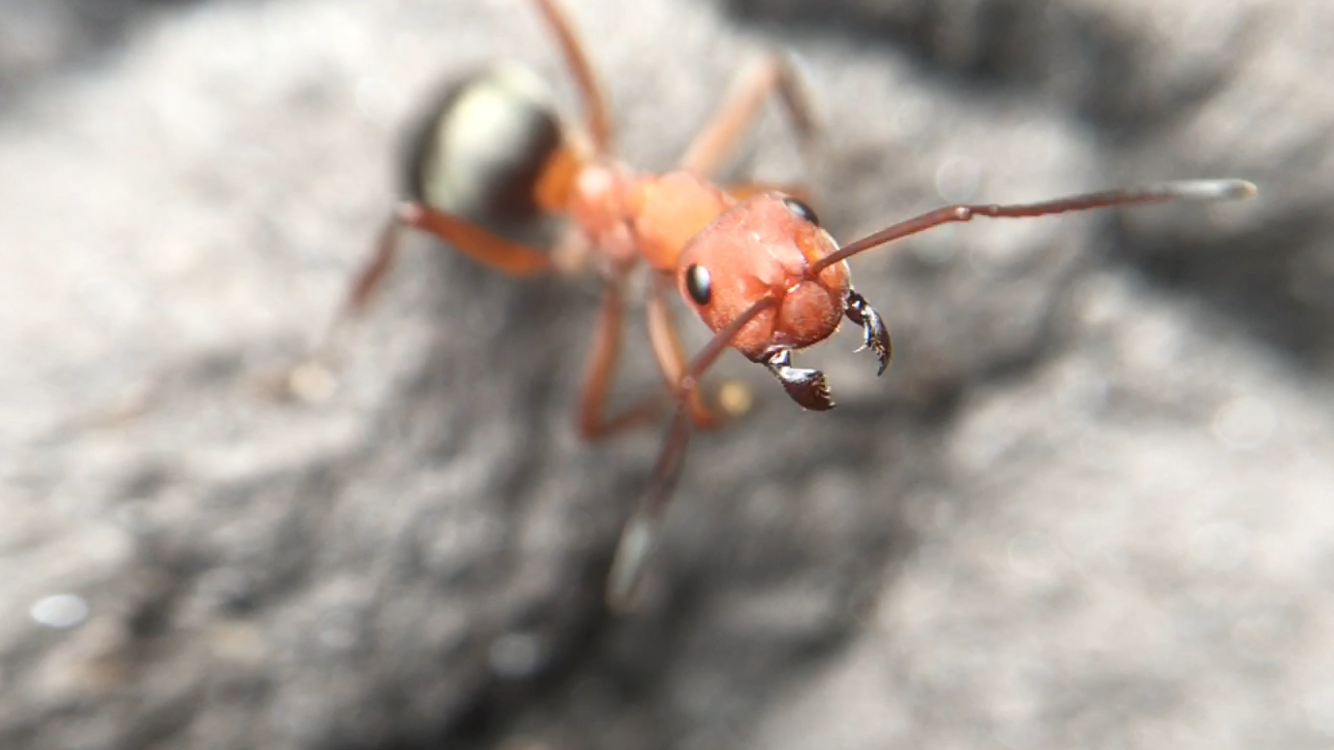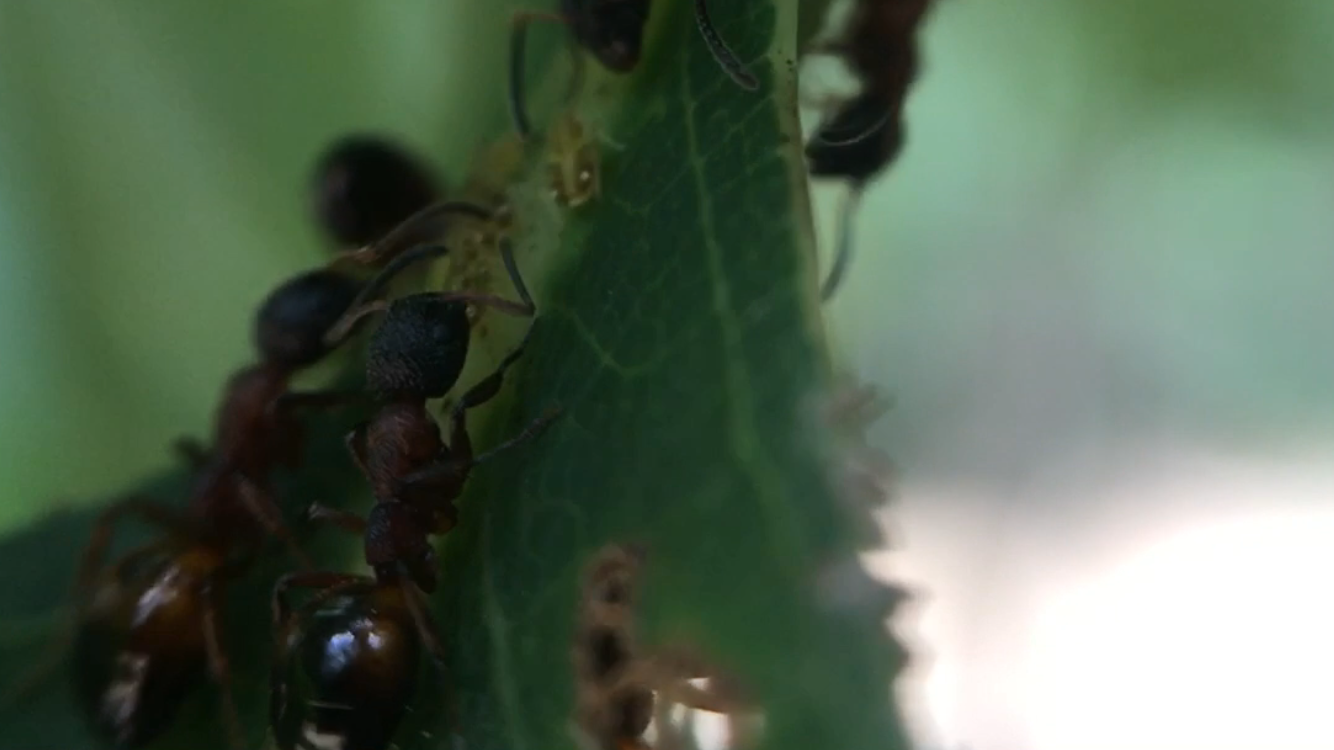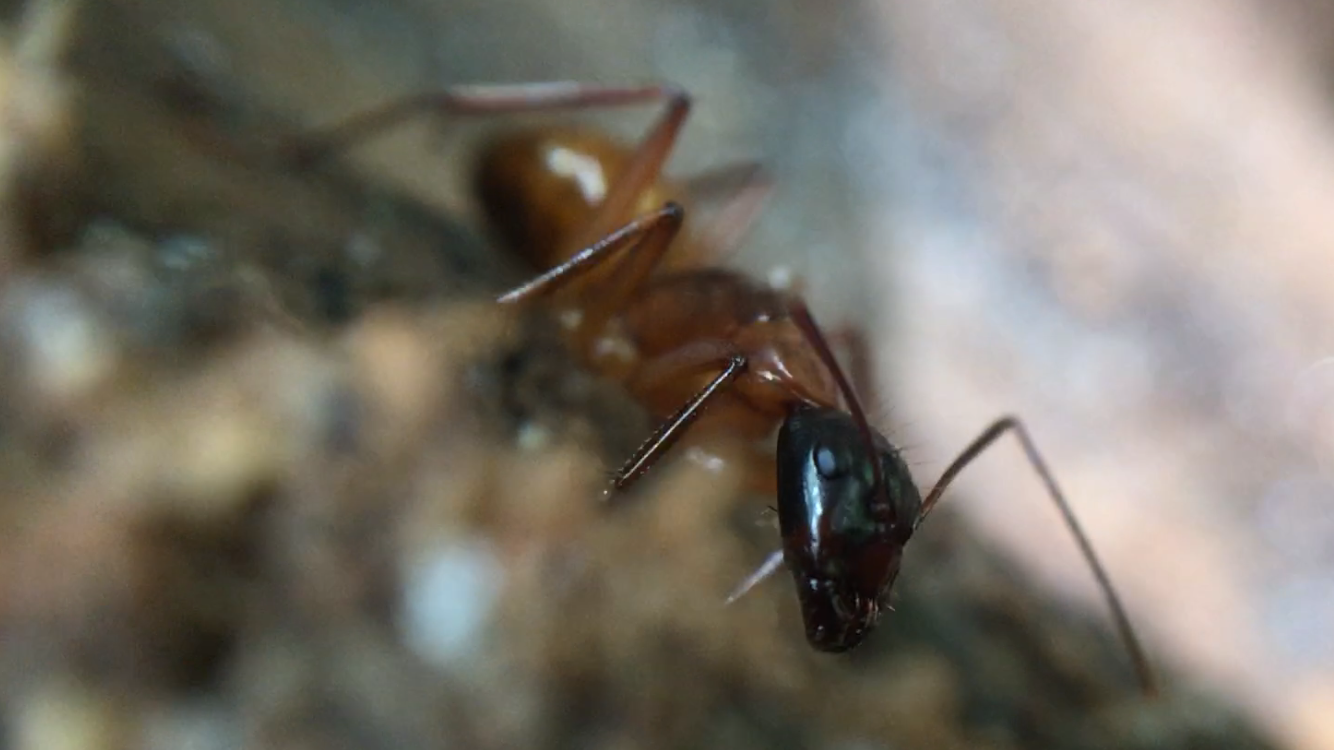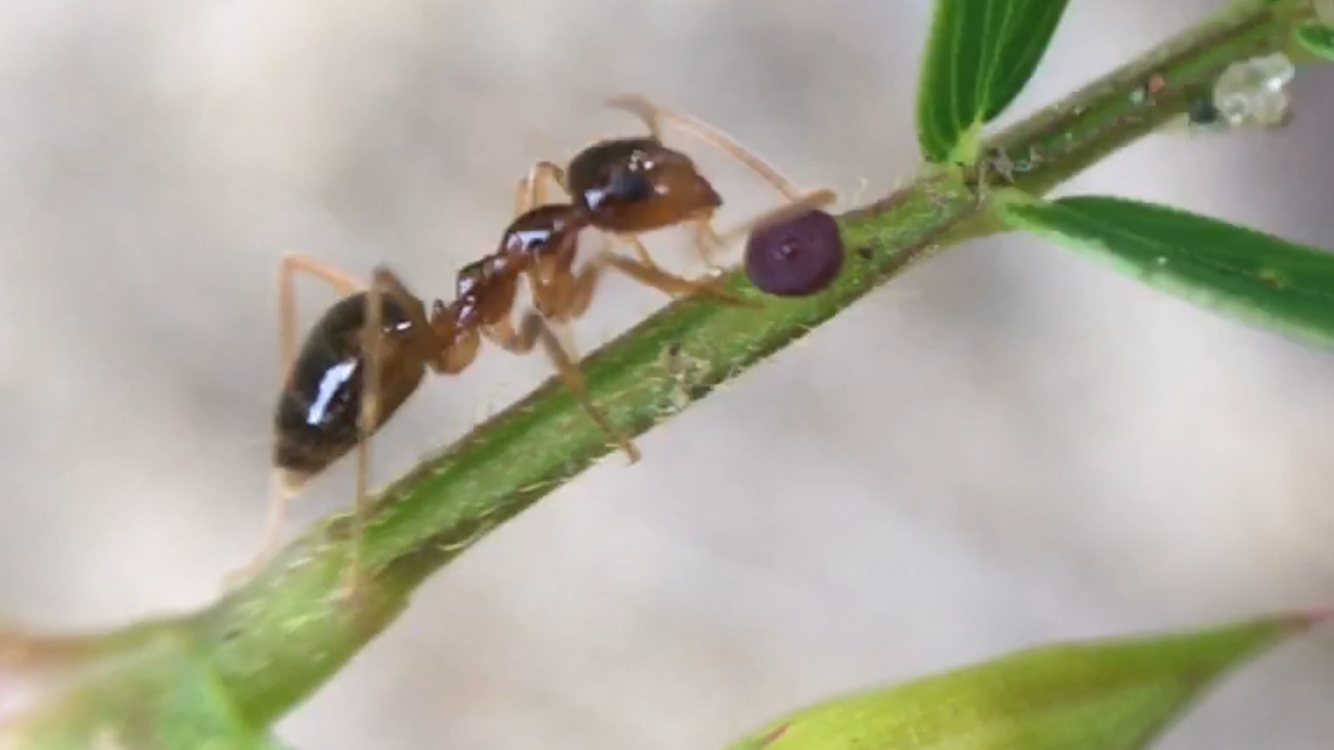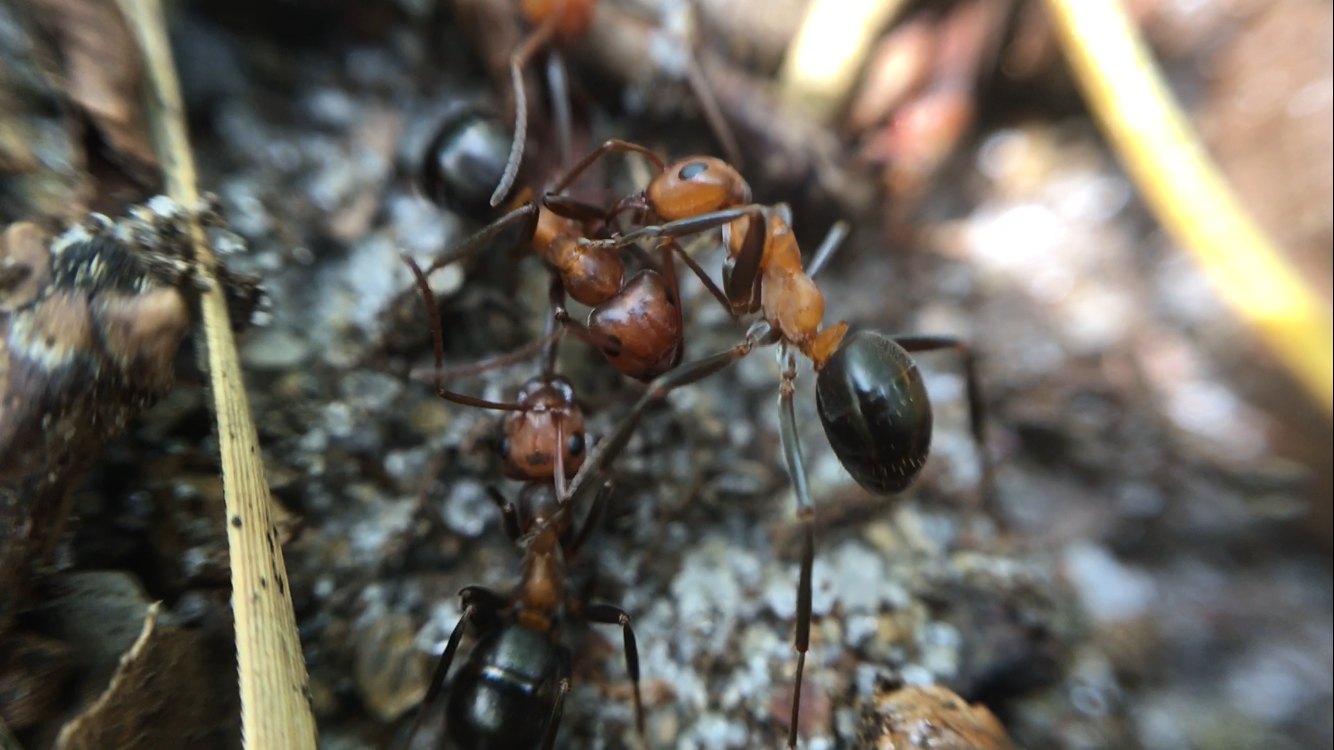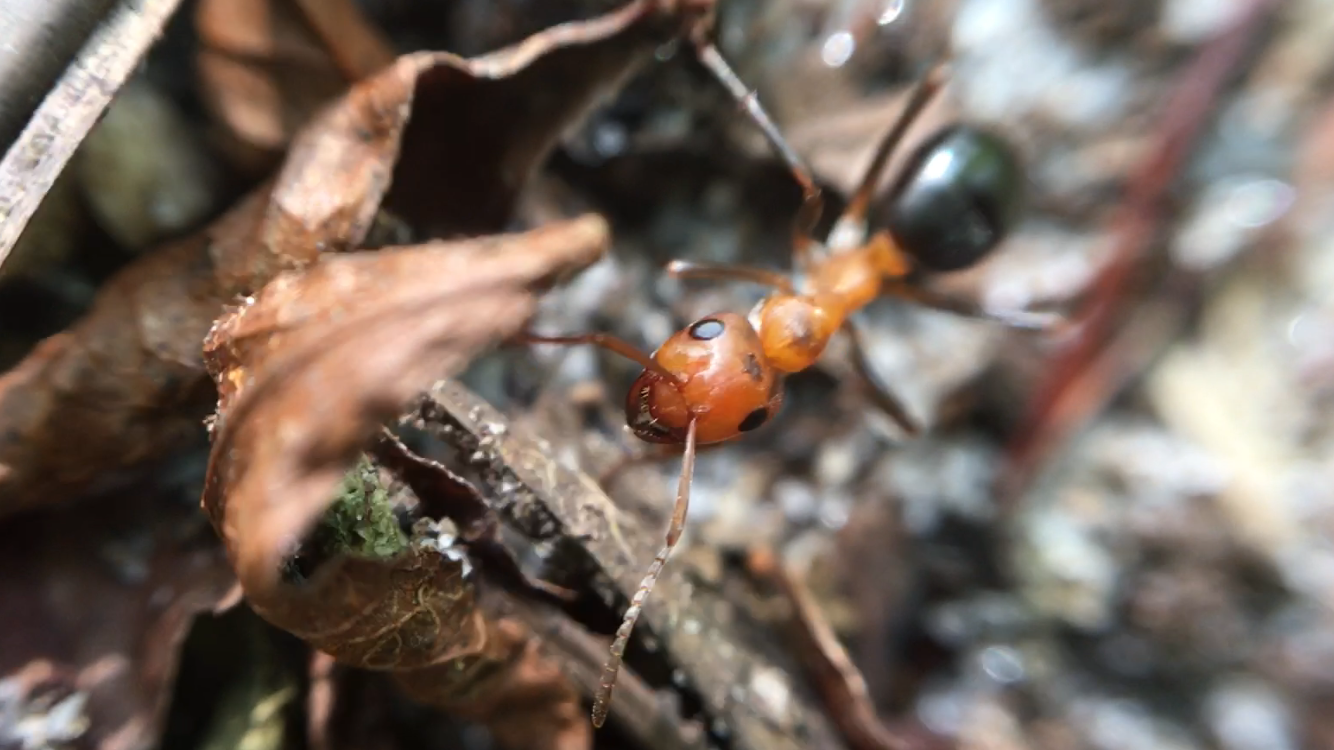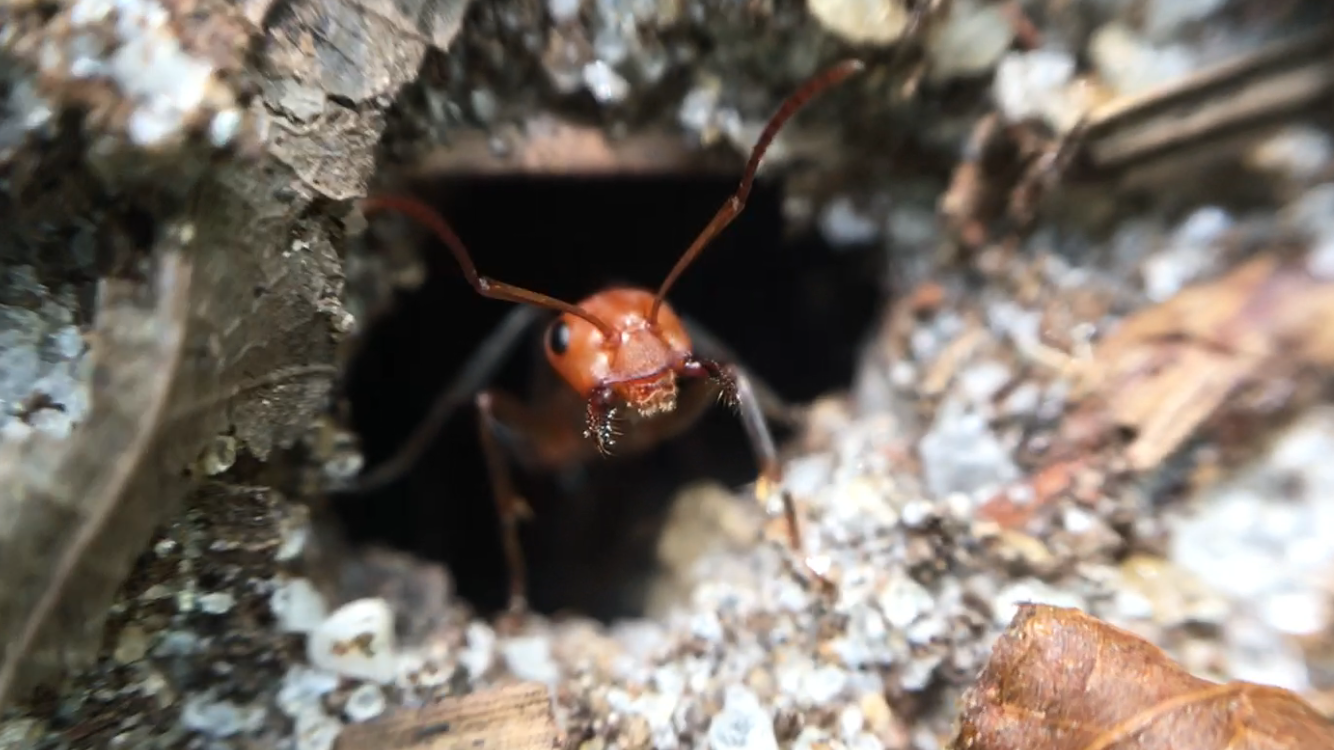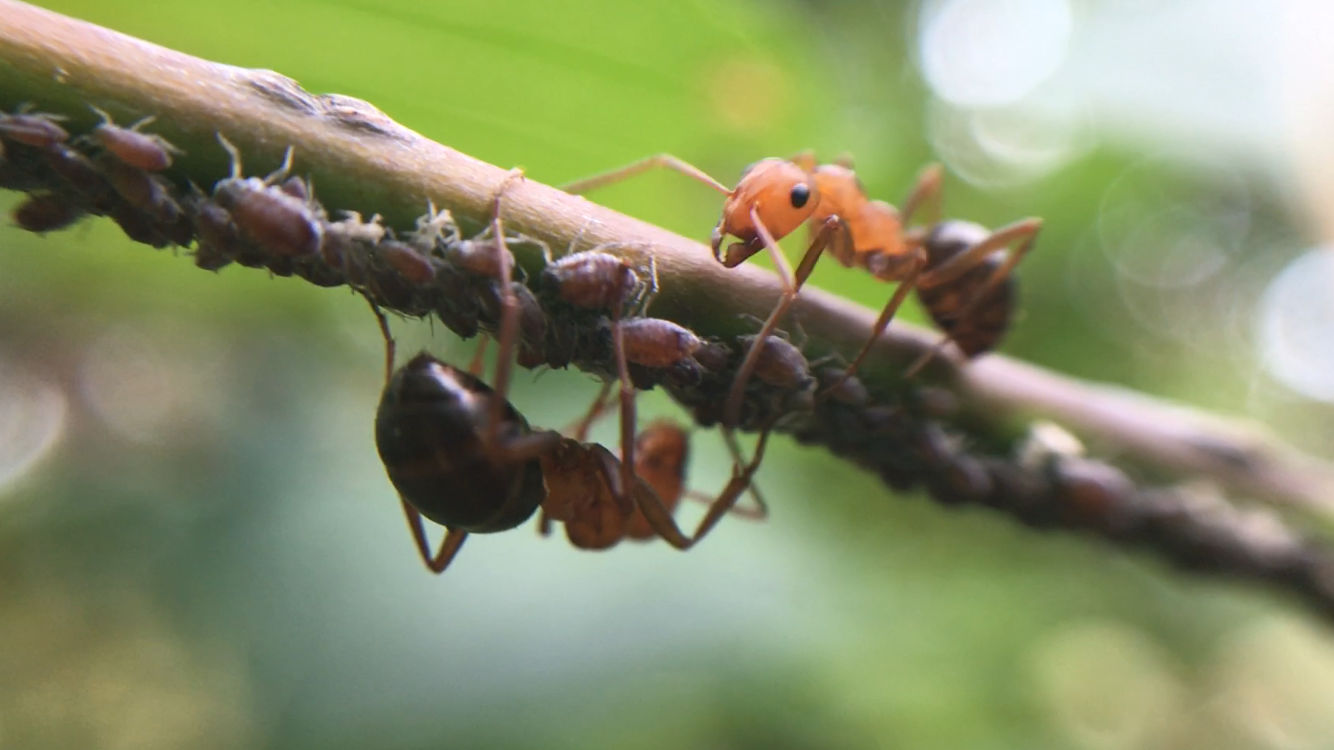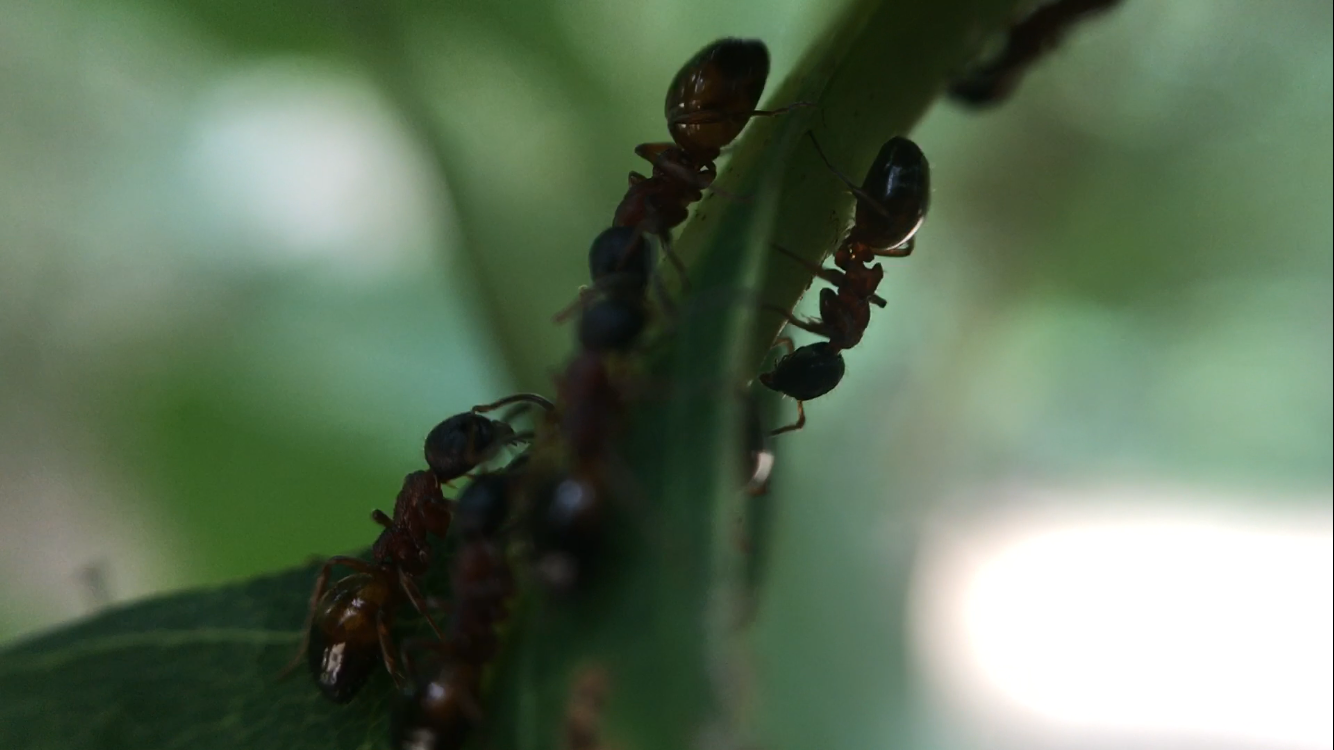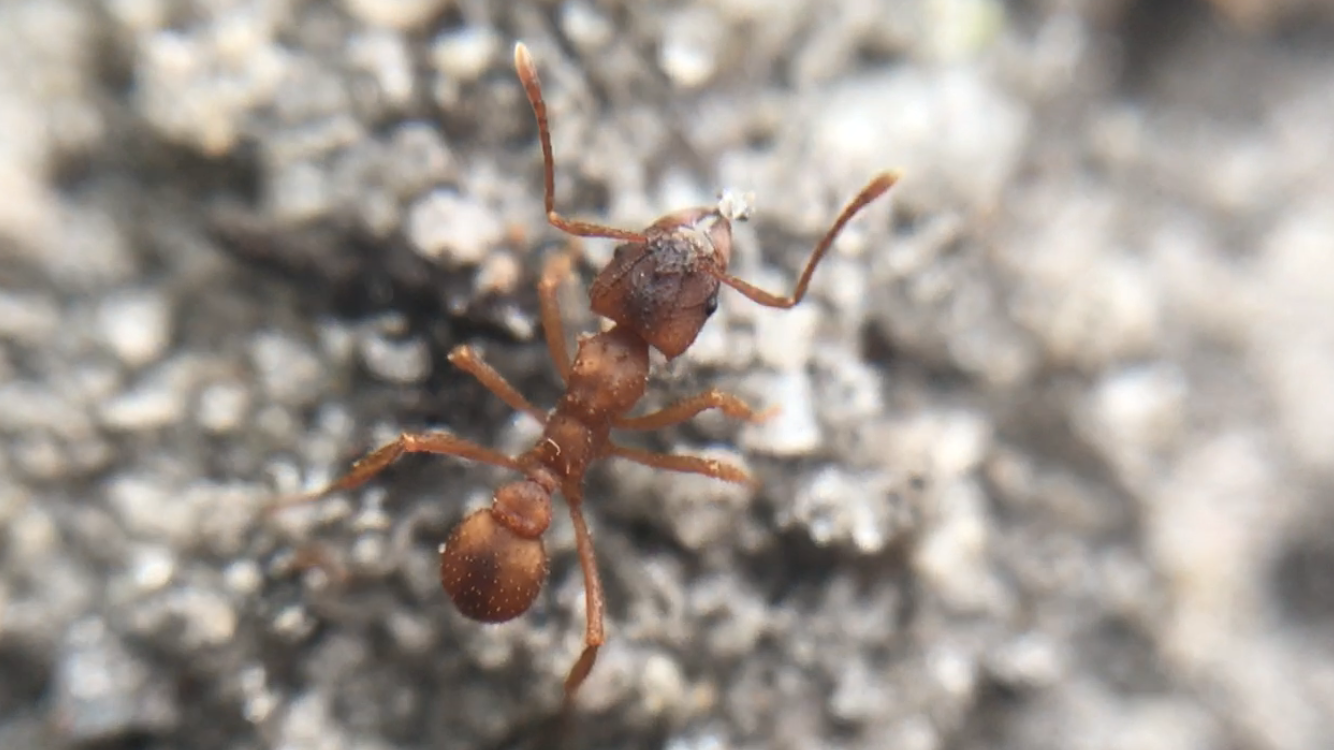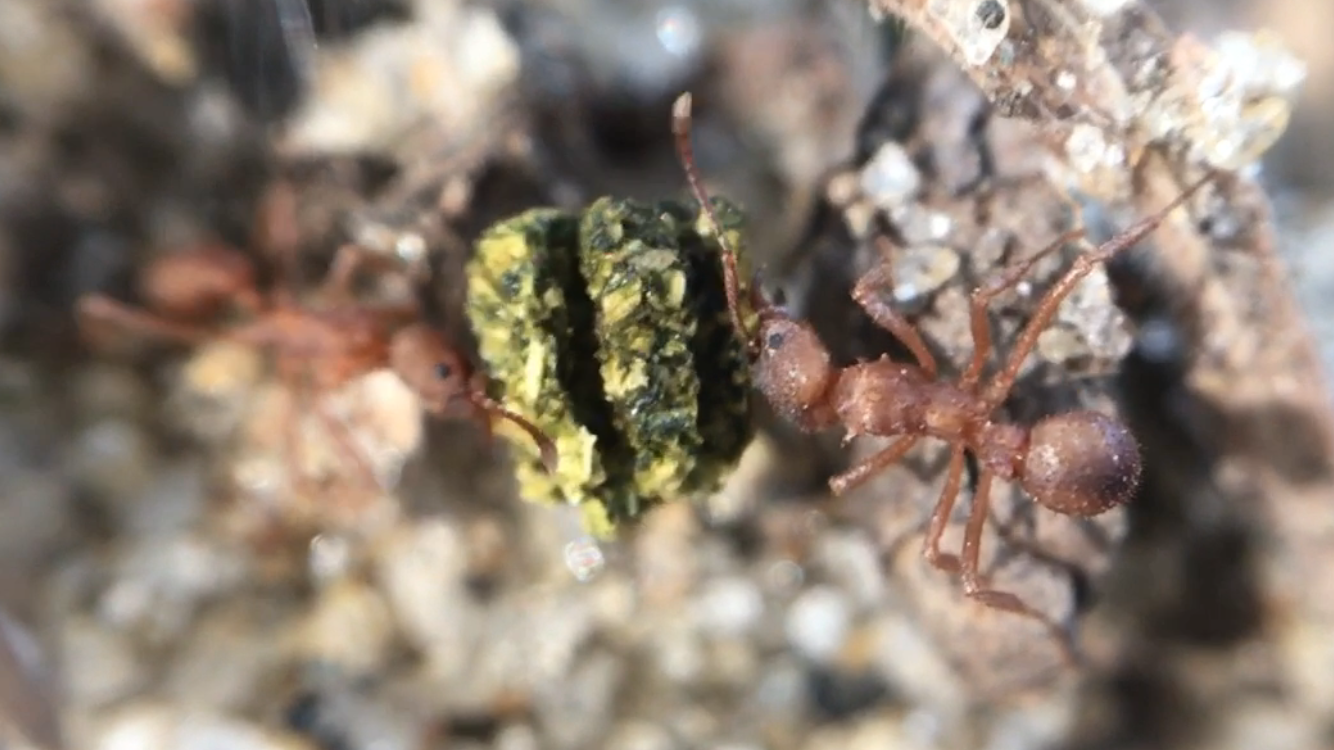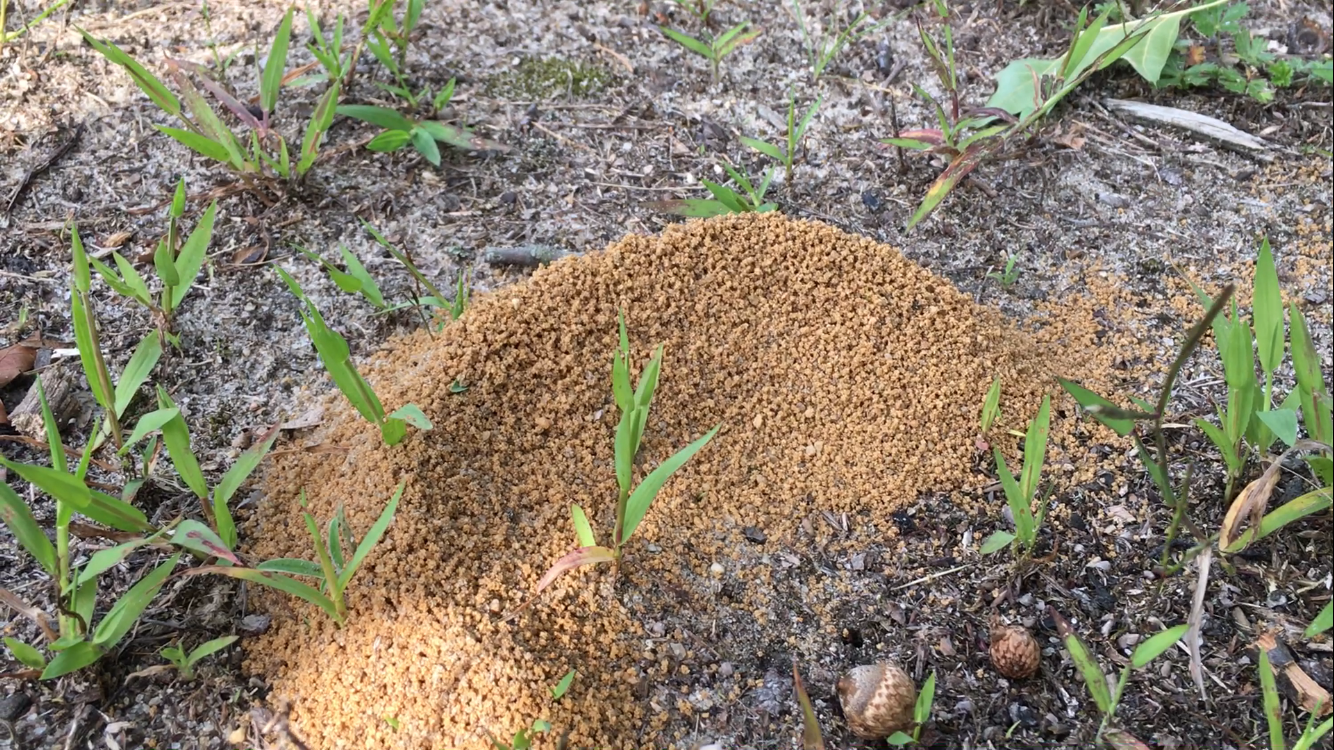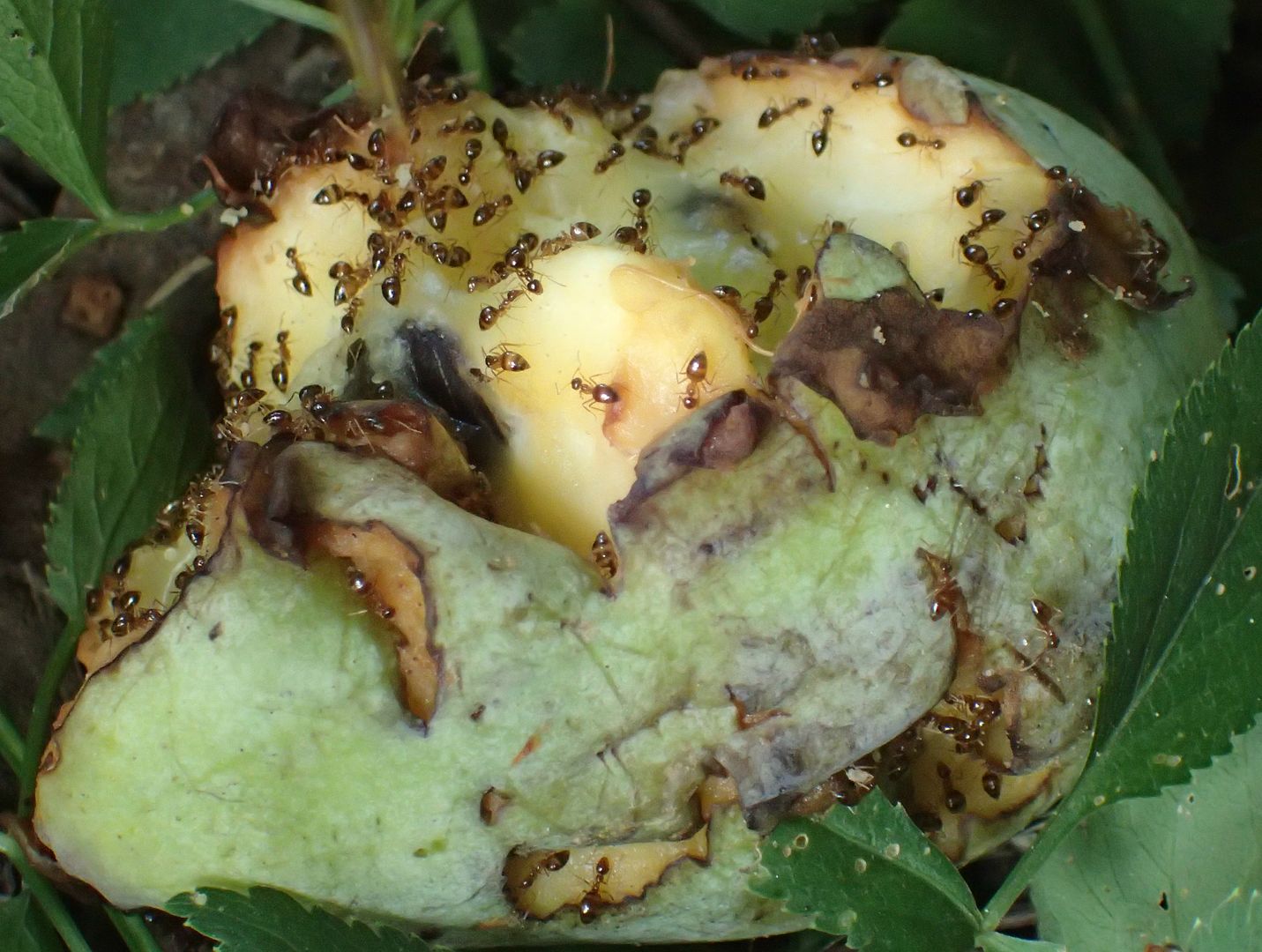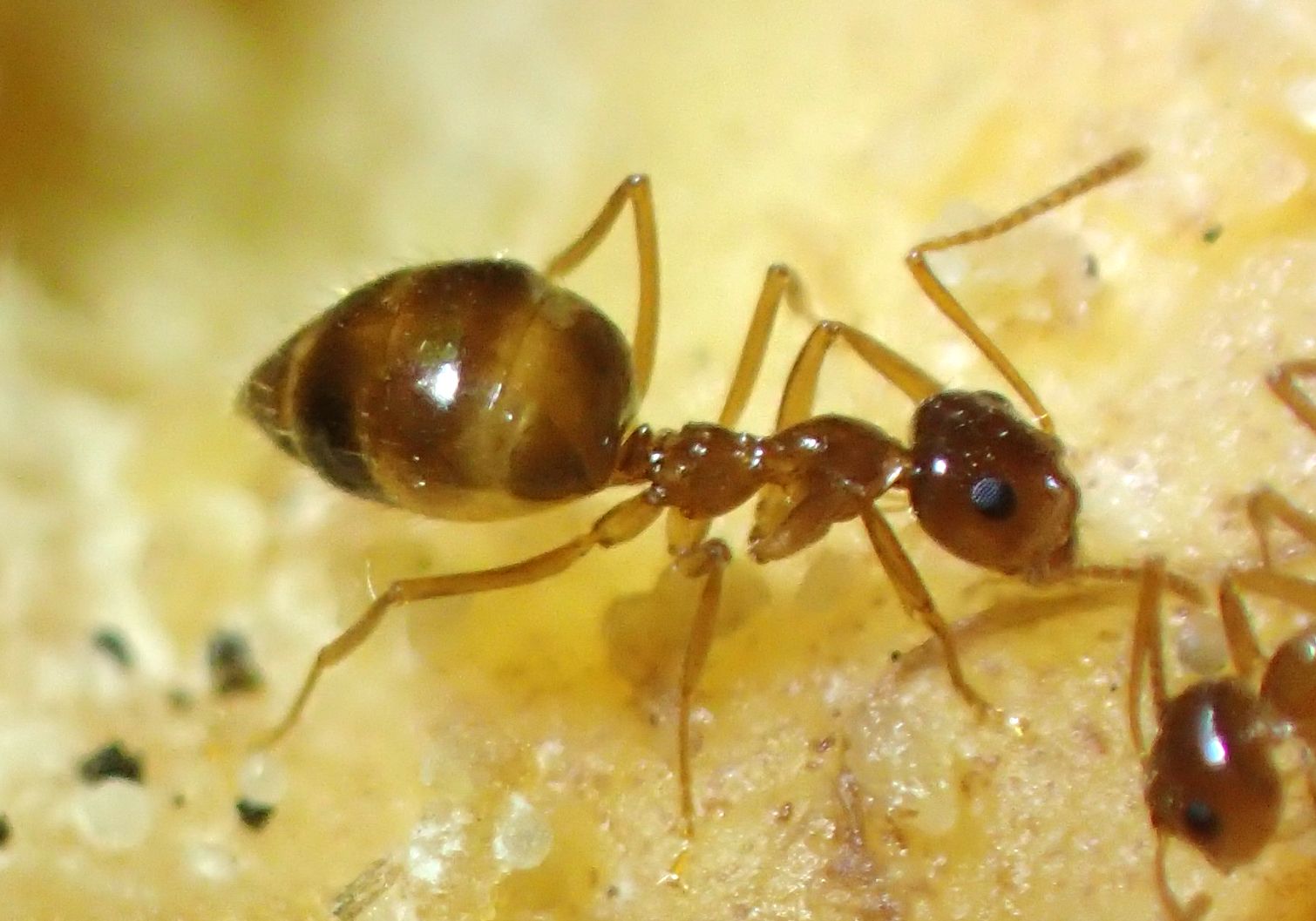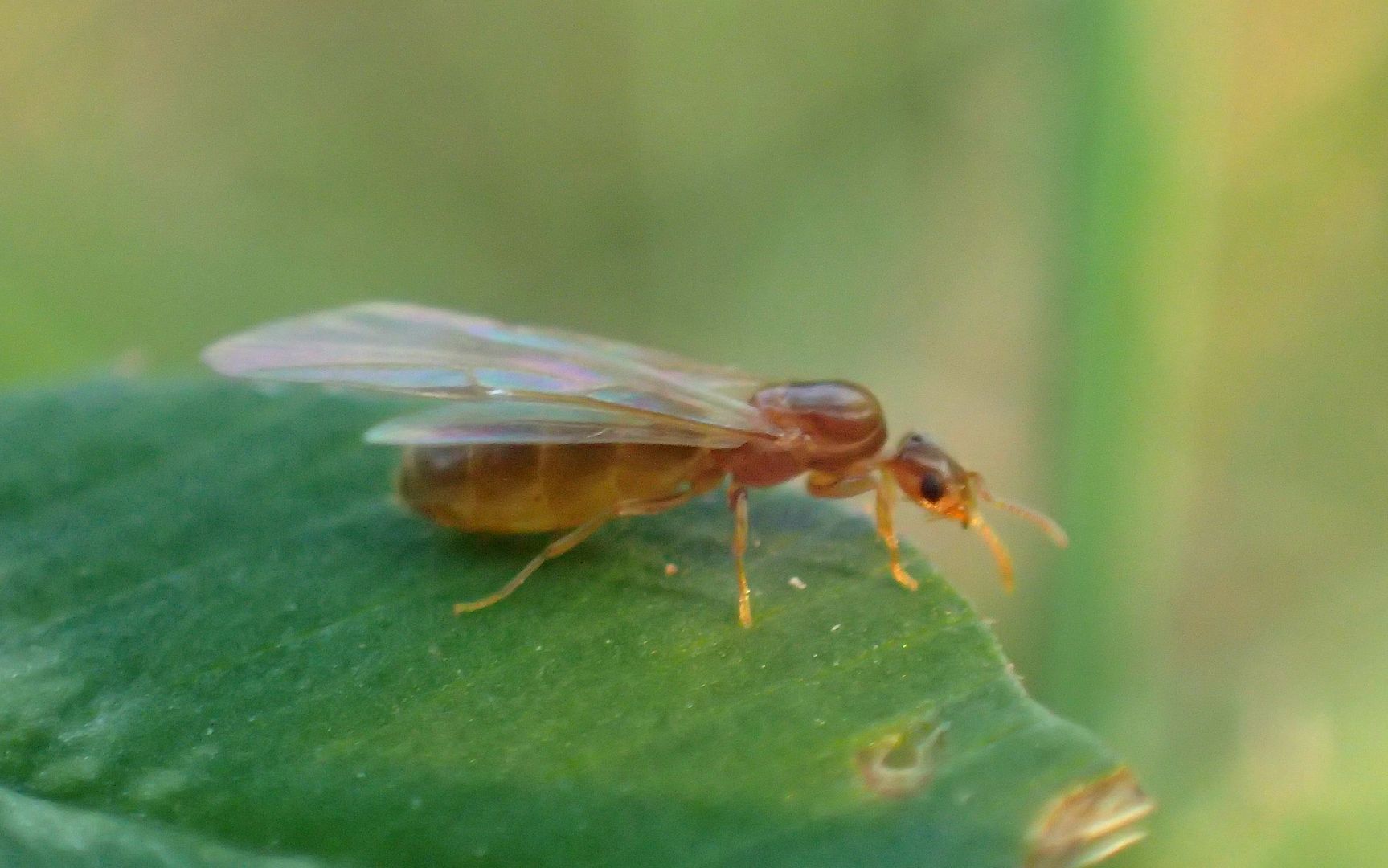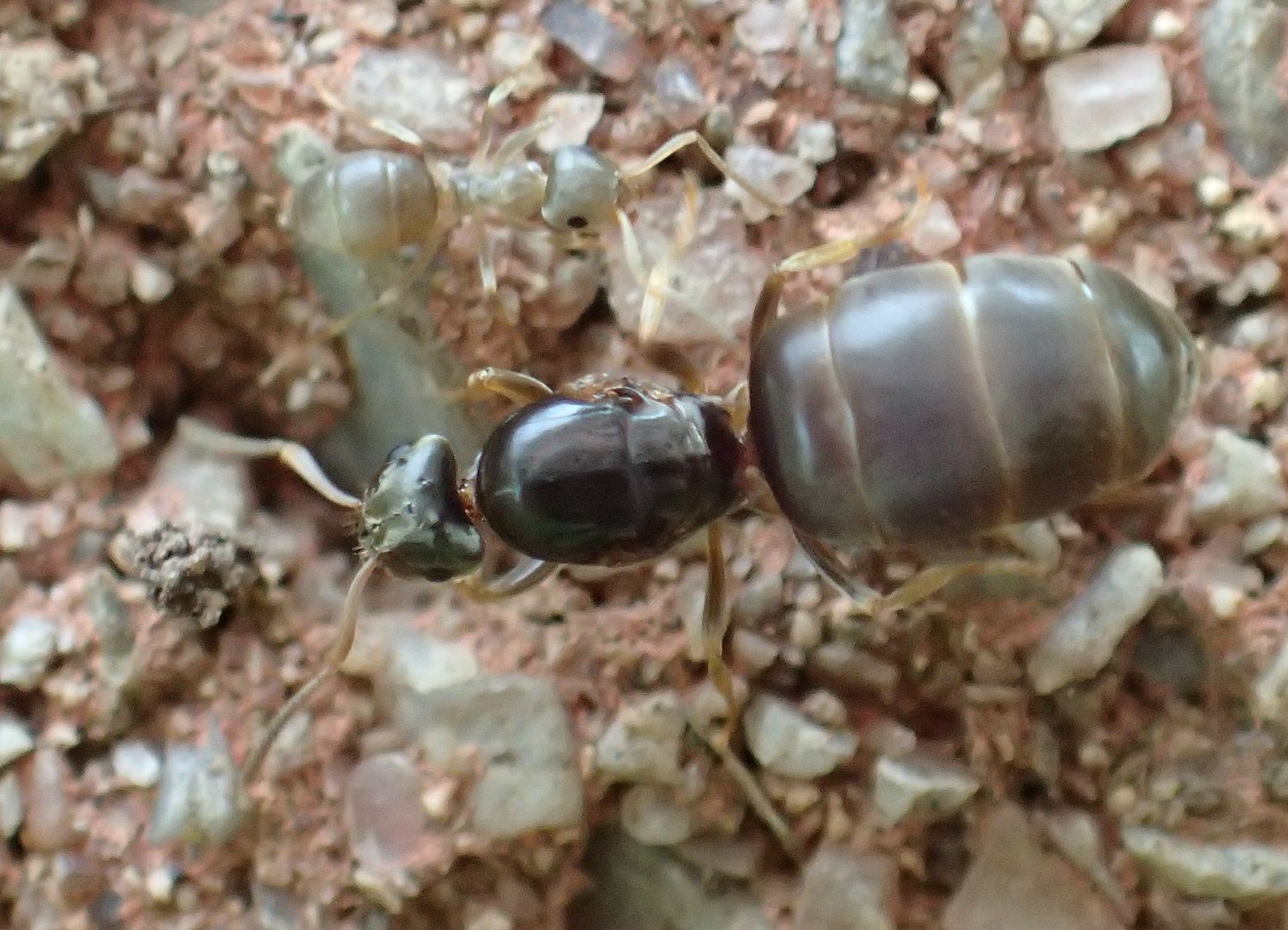
Visited a friend in Coopersburg, PA on Saturday. Came across a colony of Lasius neoniger with their queen right near the surface. Left her and the colony intact because I'm stupid I didn't want to dig a hole in my friend's lawn.
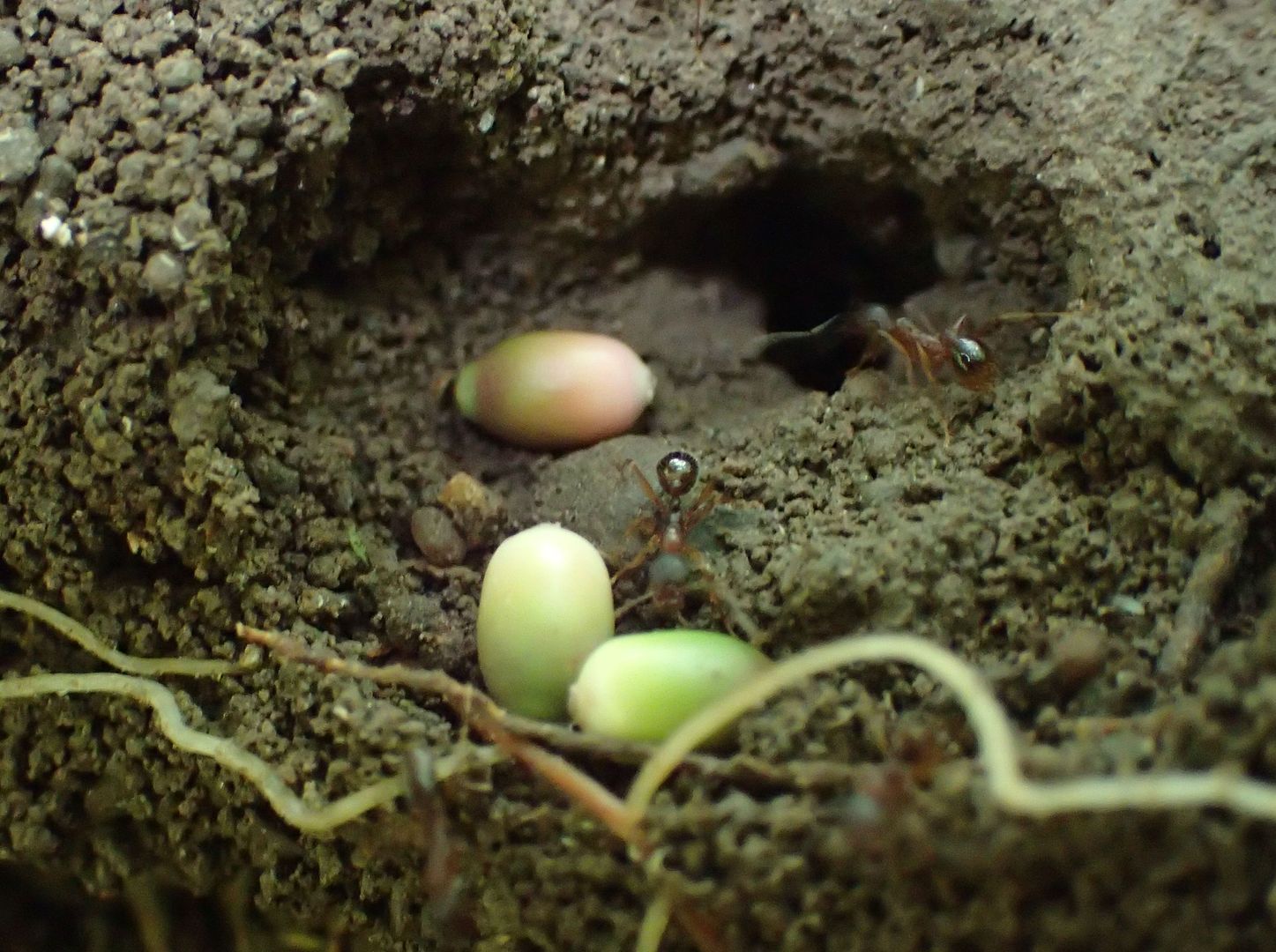
While exploring the woods I came across an Aphaenogaster rudis colony that had seeds to some wildflower in a lower chamber of their nest. This was exciting to find but the colony is on something of a slope and the rock they were under was likely dislodge in the afternoon rain and probably fell into the little stream below. Still fun to see that process happening.
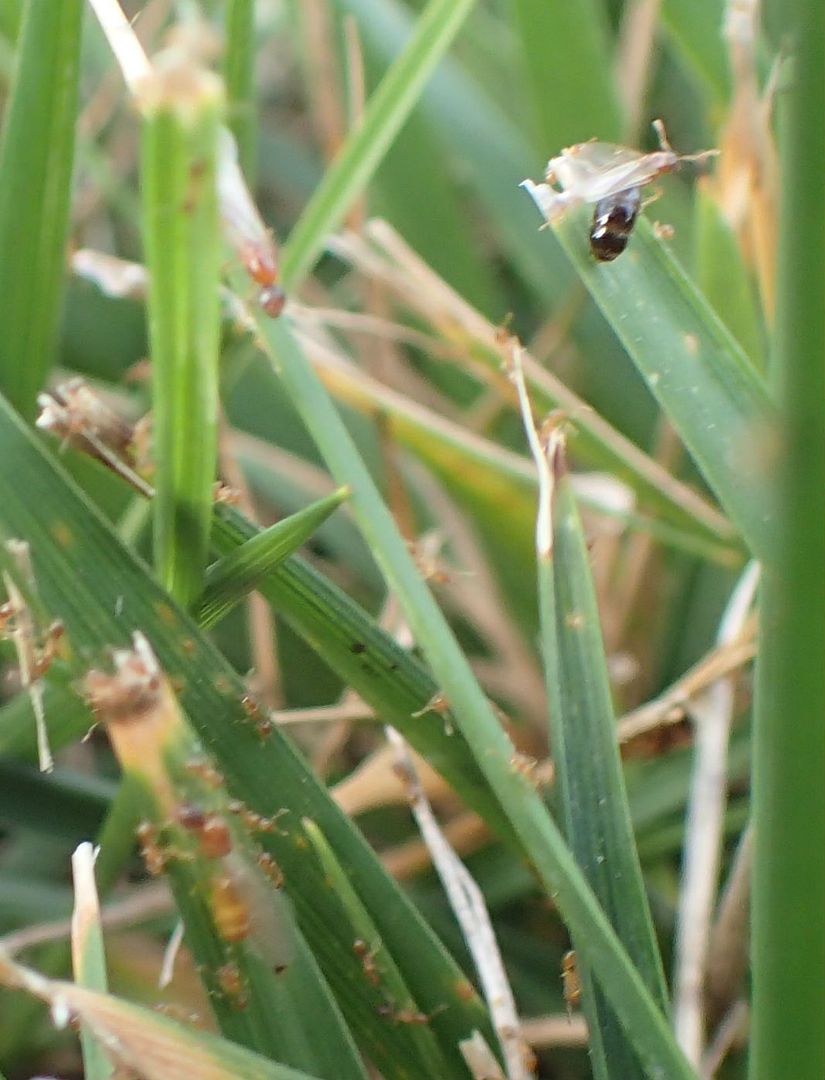
More closer to home, Solenopsis molesta flew today. It was a fairly large swarm between the hours of 4:00pm and 8:00pm. Note the one with the black gaster; it's common for queens of this species to be parasitized by nematodes, a type of worm a type of fungus. I don't think this parasite is well studied but I imagine they're not good for the queen. Clearly they use the queens as a dispersal method but their life cycle from there is a mystery. It's unlikely these queens are successful.
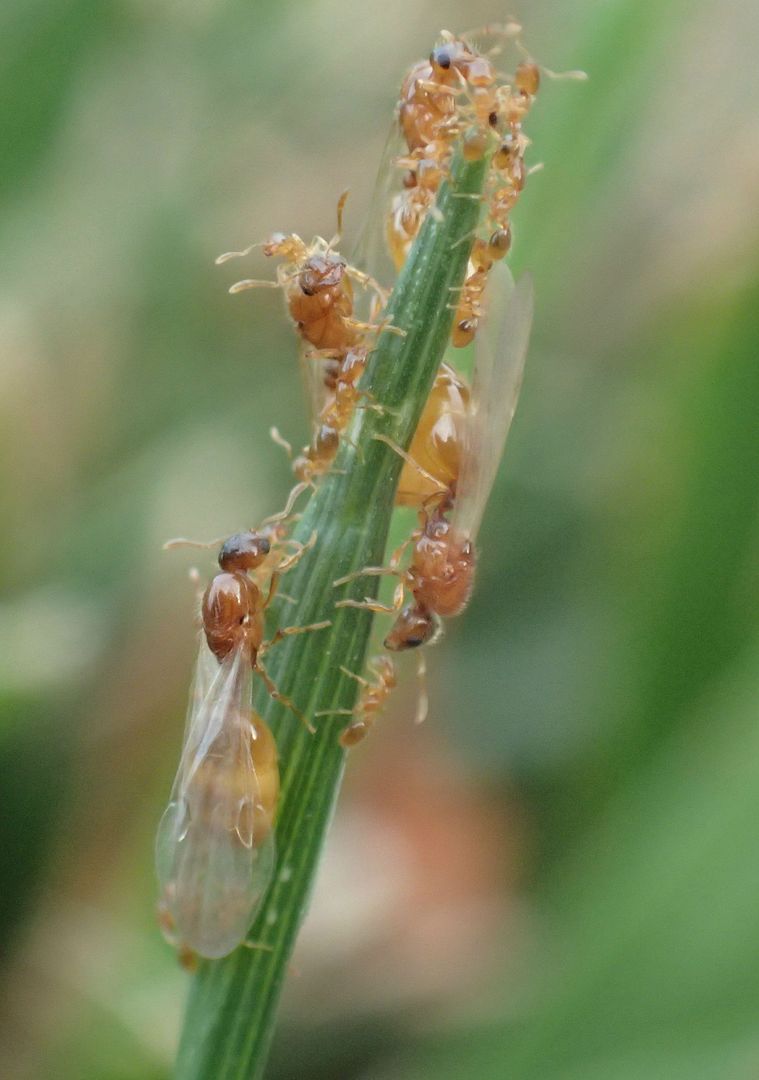
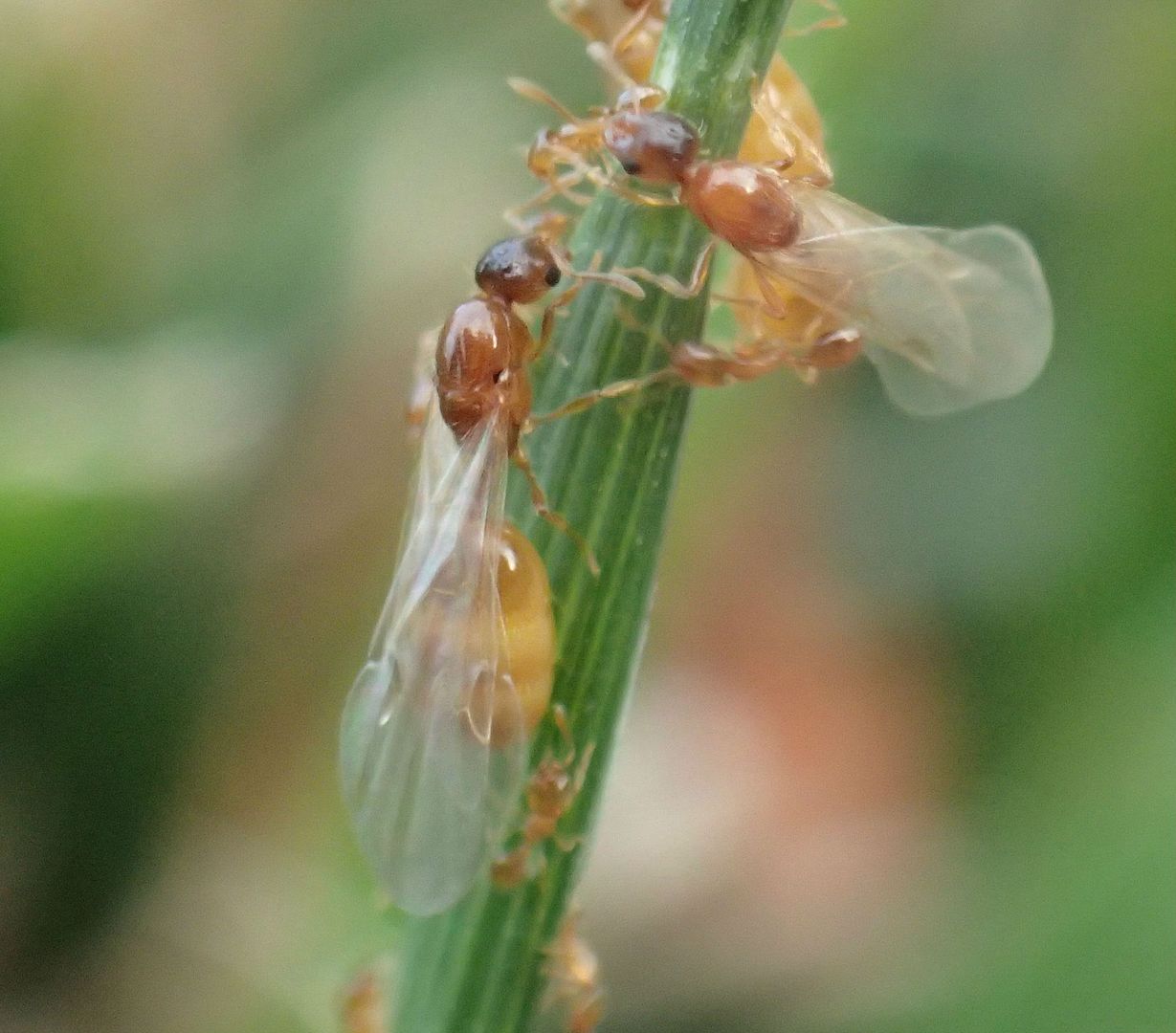
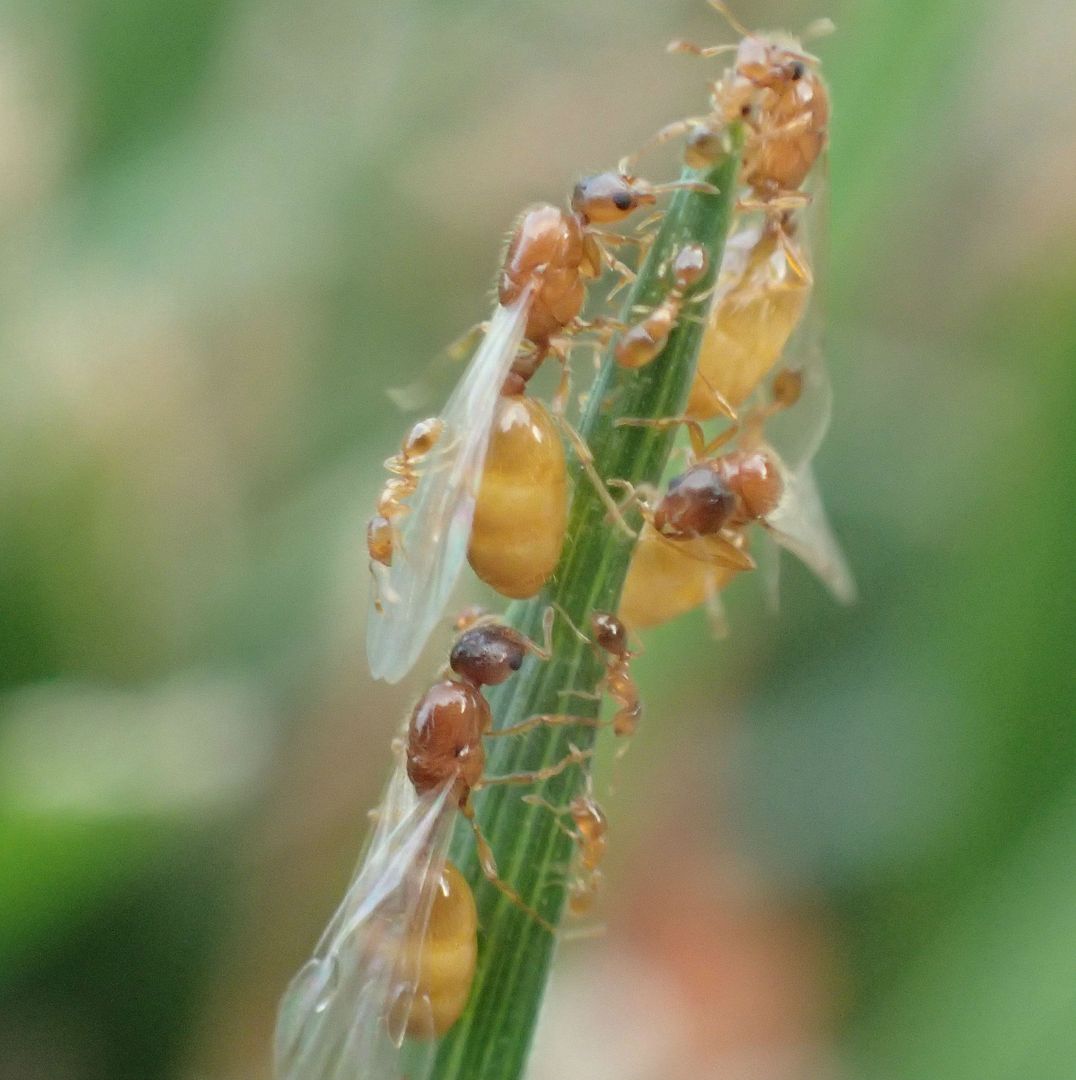
I love the worker crawling on the queen's wing in the last one here.
Also came across an Aphaenogaster rudis "flight" late in the afternoon. Probably between 7:30 and 8:30pm. They didn't' actually take off but workers were forcing males and queens out of the nest. None of which took off, perhaps tomorrow if conditions are right?
Also came across a Lasius cf. claviger queen or something like it. She arrived at the black light before it started down pouring and thundering at ~9:00. If only I had a colony of Lasius neoniger but where on earth could I get one of those?
Edited by MrILoveTheAnts, July 25 2017 - 12:22 PM.




